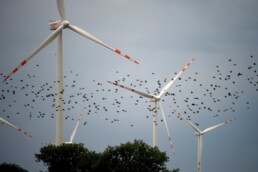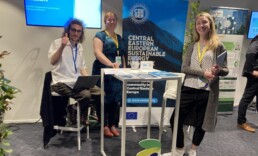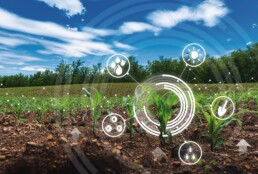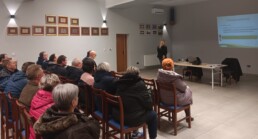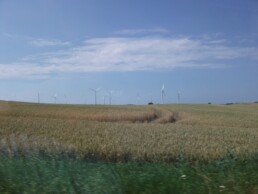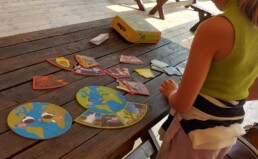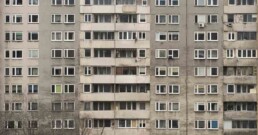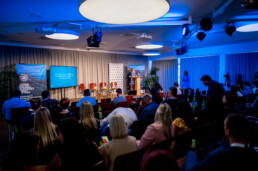Sustainable development of wind energy - the role of Bird Protection System
The ongoing growth of wind energy is crucial for achieving sustainable development goals. Clean, green energy derived from wind farms not only helps meet the growing demand for electricity but also plays a significant role in addressing environmental issues such as climate change and global warming.
Despite the undeniable environmental benefits, wind turbines have a negative impact on airborne animals. According to analyses by the US Fish and Wildlife Service, hundreds of thousands of birds die annually on wind farms. Additionally, wind turbines are a significant cause of mass bat fatalities.
In response to this problem, the Polish company Bioseco has developed the Bird Protection System (BPS), which protects birds from collisions with turbines. The system detects and monitors the presence of birds around turbines. These devices are strategically placed to protect birds throughout the entire wind farm. BPS is capable of detecting birds within a distance of up to 500 meters from the turbine, analyzing their size, flight trajectory, and likelihood of collision. If birds are detected within the predetermined distance from the turbine, bright strobe lights are immediately emitted to warn them of the danger. Additionally, if birds continue to fly towards the turbine, the system activates auditory signals, such as sirens or other warning sounds. If the flight trajectory of the birds indicates a potential collision with the turbine blades, BPS can automatically shut down or slow down the turbine, allowing birds to safely bypass the obstacle. It is also important to note that bird monitoring continues even after the danger zone has been cleared. The turbine is restarted only when the animals are at a safe distance from the turbines. Thanks to this innovative system, birds have the opportunity to safely navigate around wind farms, minimizing the risk of potential harm to the population.
The Bird Protection System paves the way for the development of wind energy that respects and protects the natural environment and biodiversity. Furthermore, it addresses the needs of ecosystem protection and endangered species conservation, as well as the implementation of measures to reduce the degradation of natural habitats.
Text sources:
- https://bioseco.com/products/farms/presentation
- https://ecoekonomia.pl/2021/06/29/turbiny-ostrzega-ptaki-i-nietoperze-przed-zderzeniem/
Photo credit: Wind Denmark
CEESEN showcased green transition expertise at EUSEW 2024
Representatives of CEESEN (Central and Eastern European Sustainable Energy Network) were delighted to participate in EUSEW (European Sustainable Energy Week) 2024, held in Brussels from June 11-13. The event gathered key stakeholders in sustainable energy to showcase innovations and facilitate networking opportunities.
CEESEN’s stand at EUSEW’s Energy Fair, themed "Sustainable Revolution and Clean Energy Transition in Central and Eastern Europe," emphasized the advancements and challenges in the region's energy transition. Attendees had the opportunity to explore the projects related to CEESEN and sustainable energy and climate action plans, engage with green transition initiatives, participate in the quiz, and pledge digital commitments to sustainable practices.
The network was represented at the stand by the President of CEESEN and the representative of the Estonian University of Life Sciences, Elis Vollmer; Policy Coordinator at Climate Alliance and partner of CEESEN projects, Max Beijneveld; the representative of DOOR, Miljenka Kuhar; and the project manager of CEESEN and University of Tartu, Helena Maripuu.
Reflecting on this year's European Sustainable Energy Week (EUSEW), our team extends our gratitude to all participants whose contributions made this event exceptional. An opportunity provided by the CINEA to CEESEN, to be represented at the largest conference dedicated to renewables and efficient energy use in Europe, was a remarkable experience for our team.
EUSEW 2024 was a standout event, with over 2,000 attendees (including 4,558 online visitors from June 11-13), more than 400 inspiring speakers, impactful plenary sessions, engaging policy discussions, a diverse Energy Fair with over 50 exhibitors, and the celebration of 111 Sustainable Energy Days worldwide.
The dialogue continues beyond the event. All EUSEW sessions are available for replay on the EUSEW platform, allowing everyone to revisit insightful discussions and maintain engagement within the community from the event.
Participating in thematic discussions, presenting the CEESEN's competences and opportunities for cooperation at a pan-European fair and making new contacts will help to improve the CEESEN’s position and contribution to society. In defining CEESEN's future strategic goals, it is equally important to contribute to the discussions based on our competences and research results, and to get a picture of the direction in which European society and scientific innovation are heading in the green transition.


Medjimurje Energy Agency Ltd. and Local Energy Agency Spodnje Podravje implementing project dealing with energy poverty
Medjimurje Energy Agency Ltd. and Local Energy Agency Spodnje Podravje, two of existing CEESEN members just started the implementation of the project dealing with energy poverty in Slovenian-Croatian cross border region. The project is called Challenges for preventing and combating energy poverty (I-PRODER) and its implementation started at the beginning of the April 2024 and will last until the end of March 2026. The implementation of the project is financed by Interreg Programme Slovenia – Croatia 2021-2027 which aim is to achieve a preserved, resilient, and connected cross-border region where sustainable development is recognized and used as a main tool in reaching economic viability, safety, biodiversity protection, and social well-being of all inhabitants.
Photo: Kick-off meeting in Čakovec, 12th of April 2024
The two of partnering agencies (partnered with two additional energy agencies who aren’t members of CEESEN) have many years of experience in the fight against energy poverty and their cooperation on this project seemed like the perfect opportunity to emphasize even more the importance of solving the energy poverty problem in the Slovenian-Croatian cross border region. The main goal of the project is to improve the knowledge and competences of different decision-makers and encourage their commitment to action in the direction of preventing and combating energy poverty in households based on the bottom-up principle. Interventions will be based on recommendations that will be defined through the implementation of a comparative analysis of the current situation as well as through conducted energy audits in 100 Croatian households, which is crucial for raising awareness among decision makers and general public. In addition to the energy audits, the audited households will receive the promotional package of products for the implementation of emergency measures (LED bulbs, economical aerators, thermostatic valves, reflective foils, etc.) in order to ensure certain savings in energy consumption and corresponding costs.
Photo: Example of energy saving kit for the household
Among other project activities, it is crucial to mention the creation of a comparative analysis of policies and instruments for the fight against energy poverty, the development of a technical assistance pilot model for the preparation of projects aimed at solving energy poverty for local governments and the creation of an action plan for preventing and mitigating energy poverty with recommendations for the entire SLO-CRO cross-border area. The document will serve as the foundation for collaboration and will define the work plan and a framework that will identify potential organizations for its implementation.
Given the fact that I-PRODER project primarily deals with energy poverty and its effects on the households, possible synergies with CEESEU-DIGIT have already been noticed. For more information about the project as well as all upcoming activities and events and their connection with those in the CEESEU-DIGIT project, follow the Facebook pages of Medjimurje Energy Agency Ltd. and Local Energy Agency of Spodnje Podravje.
Innovative technologies as an opportunity for green development of the agricultural sector
In response to the challenges associated with climate change, agriculture is obligated to reduce greenhouse gas emissions and to implement practices and technologies aimed at limiting energy consumption, resources, and production inputs. Because of this, a Green Transformation of the agricultural sector is necessary, encompassing production, technological, and business aspects. This transformation pertains not only to individual farms but also to rural areas. In the context of this change, new innovative technologies are being implemented, such as hydroponics, aquaponics, agrophotovoltaics, precision agriculture, and agricultural biogas plants.
Hydroponics is an advanced method of soilless cultivation, involving the growth of plants in a water-based solution instead of traditional soil. Plants are placed in an inner container filled with materials like vermiculite or perlite, allowing the roots access to nutrients. One of the key advantages of hydroponics is its efficient resource utilization. Plants grown in hydroponic systems consume less water and nutrients compared to traditional methods. Additionally, products obtained from hydroponic cultivation are richer in nutrients because plants directly absorb them from the water solution rather than from the soil. Due to the ability to cultivate year-round and the reduced susceptibility to weed growth, hydroponics enables stable production of high-quality yields. Moreover, this cultivation system allows for better control over plant growth and minimizes the risk of contaminating products with pesticides or heavy metals. Because of these benefits, hydroponics represents an attractive option for agricultural producers, especially in the context of seeking new solutions for organic food production on smaller surfaces.
Aquaponics is a combination of fish farming with plant cultivation, where the by-products of one process serve as a source of nutrients for the other. This modern approach ensures efficient resource utilization and minimizes waste and negative environmental impact. Additionally, aquaponics enables food producers to save costs and enhances their competitiveness in the market. Not only does aquaponics bring economic benefits, but it also has a positive environmental impact. By utilizing fish waste as a natural fertilizer for plants and recycling water, the system allows for significant water savings and minimizes greenhouse gas emissions. Furthermore, by implementing this system, it is possible to achieve nearly emission-free production of fish and vegetables and significant energy savings compared to traditional food production methods.
Agrophotovoltaics, also known as agrivoltaics or Agri-PV, is a solution that allows for the simultaneous use of agricultural land for energy production and crop cultivation. By installing PV panels above or between rows of plants, farmers can effectively protect crops from adverse weather conditions such as hail or drought, resulting in agricultural production stability. Additionally, the generated electrical energy enables farms to achieve energy self-sufficiency and even produce surplus energy that can be sold to the grid, thereby supporting the development of sustainable energy. Technical and environmental aspects, such as reducing soil erosion and increasing biodiversity through maintaining green spaces under the panels, provide additional benefits for the natural environment, highlighting the significance of agrophotovoltaics for sustainable agricultural development and environmental protection.
Precision agriculture utilizes advanced technologies and IT tools to gather data about soil, plants, and weather conditions. Through devices such as GPS, sensors, or drones, farmers collect precise information about soil moisture, nutrient levels, and atmospheric conditions. This data enables the determination of optimal conditions for plants and the adjustment of cultivation and fertilization to their needs. The primary goal of precision agriculture is to increase crop efficiency, reduce production costs, and improve the quality of agricultural products. By precisely applying fertilizers and pesticides and adjusting irrigation systems to plant needs, it is possible to achieve higher yields with less consumption of natural resources.
Agricultural biogas plants are special installations that process organic matter through anaerobic fermentation into biogas, which can be used for electricity and heat production in cogeneration units. This is a beneficial solution that allows farms to partially meet their energy needs and the possibility to sell excess energy. Biogas production can represent a new direction for the development of Polish farms, utilizing the significant raw material potential existing in agriculture. The benefits of farm biogas plants are numerous. Firstly, they enable farms to become independent of energy supplies, which is particularly important in peripheral areas. Surplus energy can be sold to the grid, generating additional income for farms. Biogas plants also stabilize the energy grid in rural areas. The utilization of by-products from agriculture and the agri-food industry in biogas plants contributes to environmental protection, reducing costs associated with the disposal of these materials. Additionally, energy production in biogas plants is characterized by a zero-carbon dioxide emissions balance and a reduction in greenhouse gases, which is significant for the environment.
Text sources:
- https://cordis.europa.eu/article/id/203873-sustainable-food-production-through-aquaponics/pl
- https://energiadlawsi.pl/zielona-transformacja-na-obszarach-wiejskich
- https://technologia.kpodr.pl/index.php/2023/01/23/agrofotowoltaika/
- https://ekoguru.pl/baza-wiedzy/uprawy-hydroponiczne-szansa-dla-zrownowazonego-rozwoju-miast/
- https://precyzyjnerolnictwo.pl/
- https://www.cdr.gov.pl/images/Radom/pliki/oze/243E%20BIOGAZOWNIE%20ROLNICZE.pdf
Cover photo: lamyai/Getty Images (Artificial intelligence plays critical role behind the scenes in precision farming | Farmtario)
How to better support local-level energy transition?
This article summarises the report “Policy Recommendations for Enhancing Support Offered to CEE Municipalities”.
The full report can be accessed here
Why support Central and Eastern European municipalities?
While the big drivers of the energy transition are the European Union (EU), National Energy and Climate Plans (NECPs) and networks such as the Covenant of Mayors (CoM), municipalities play a crucial role in the transition to a low-carbon society. Central and Eastern Europe (CEE) municipalities have lagged behind their Western European counterparts in joining the CoM framework for a variety of reasons, including political unwillingness, insufficient awareness, inadequate expertise and capacity, and a lack of access to resources.
The Central and Eastern European Sustainable Energy Union (CEESEU) aims to build the capacity of public administrators in CEE to develop Sustainable Energy and Climate Action Plans (SECAPs) that promote increased energy efficiency, sustainable energy, reduced carbon emissions and improved climate change adaptability, helping the region to contribute towards meeting the EU's climate goals. The Horizon-funded CEESEU project (2020-2023) operated in eight different CEE Member States – Croatia, Czech Republic, Estonia, Hungary, Latvia, Poland, Romania, and Slovenia – and in 22 smaller municipalities. By the end of the project, it triggered nearly 250 million Euros of investment in sustainable energy, increased by 124 GWh renewable energy production, improved capacity and skills of more than 500 staff in CEE municipalities, and more.
Policy recommendations to better support CEE municipalities
Five recommendations emerge from CEESEU partners’ experiences and lessons learned while implementing climate and energy plans in CEE countries.
- Enhance cooperation and multi-level dialogues
Facilitate establishing institutionalised coordination mechanisms at the national and sub-national level for a comprehensive and effective development and implementation of climate and energy policies and strategies.
- Improve knowledge transfer and networking
Facilitate knowledge sharing, good practice exchanges, and peer-to-peer learning among CEE municipalities and regional authorities to accelerate SECAP development and further implementation. Encourage local and regional authorities and stakeholders to set up regional networks for collaboration.
- Improve capacity building
Develop and provide tailored guidance and capacity-building programs specifically designed for CEE local authorities, taking into account the unique challenges and opportunities in CEE regions.
- Provide tailored technical assistance
Offer technical assistance and support in energy/climate data collection, risk and vulnerability assessments/analyses, and planning, tailored to the specific challenges in CEE regions.
- Make MyCovenant more flexible
Adjust and align CoM to better fit the context of CEE countries at both national and sub-national levels.
The full report can be accessed here
Read more about CEESEU project
Contact us with any questions at info@ceesen.org
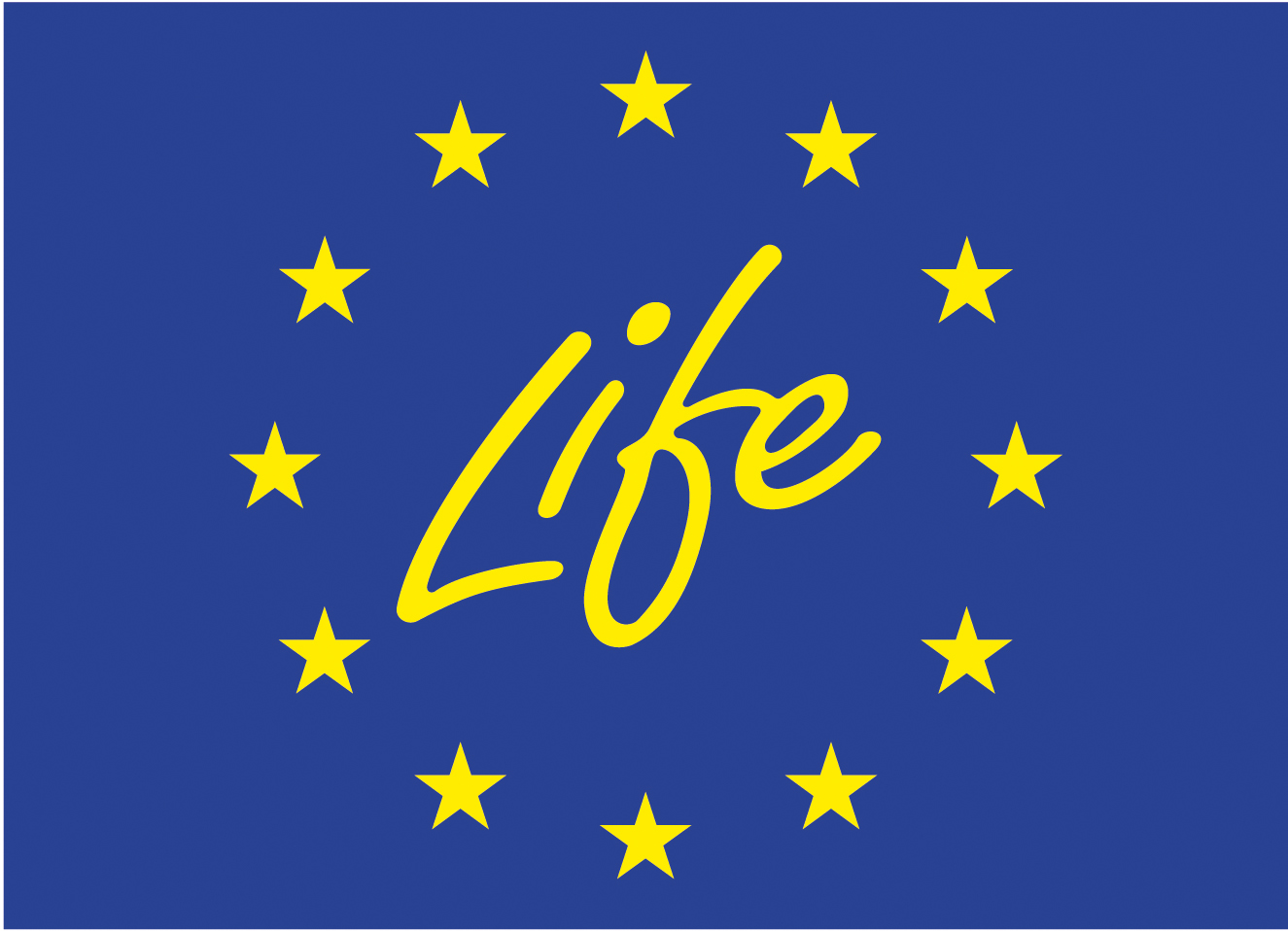 The CEESEU project has received funding from the European Union’s Horizon 2020 research and innovation programme under grant agreement No 892270. The sole responsibility for the content of this material lies with the authors. It does not necessarily represent the views of the European Union, and neither EASME nor the European Commission are responsible for any use of this material.
The CEESEU project has received funding from the European Union’s Horizon 2020 research and innovation programme under grant agreement No 892270. The sole responsibility for the content of this material lies with the authors. It does not necessarily represent the views of the European Union, and neither EASME nor the European Commission are responsible for any use of this material.
Buses powered by hydrogen fuel cells: Ecological Revolution in Public Transport
In the face of an increasingly urgent need to reduce greenhouse gas emissions and combat climate change, the transportation industry is seeking more environmentally friendly solutions. One of the most promising directions for development is a bus powered by hydrogen fuel cells. Experts estimate that in a 12-year life cycle, a hydrogen bus saves up to 800 tons of CO₂ emissions compared to a diesel vehicle.
These buses utilize fuel cell technology to convert hydrogen and oxygen into electrical energy, which powers the vehicle. This process does not generate exhaust emissions, with the only by-product being pure water, making hydrogen fuel cell-powered buses one of the most environmentally friendly vehicles on the roads.
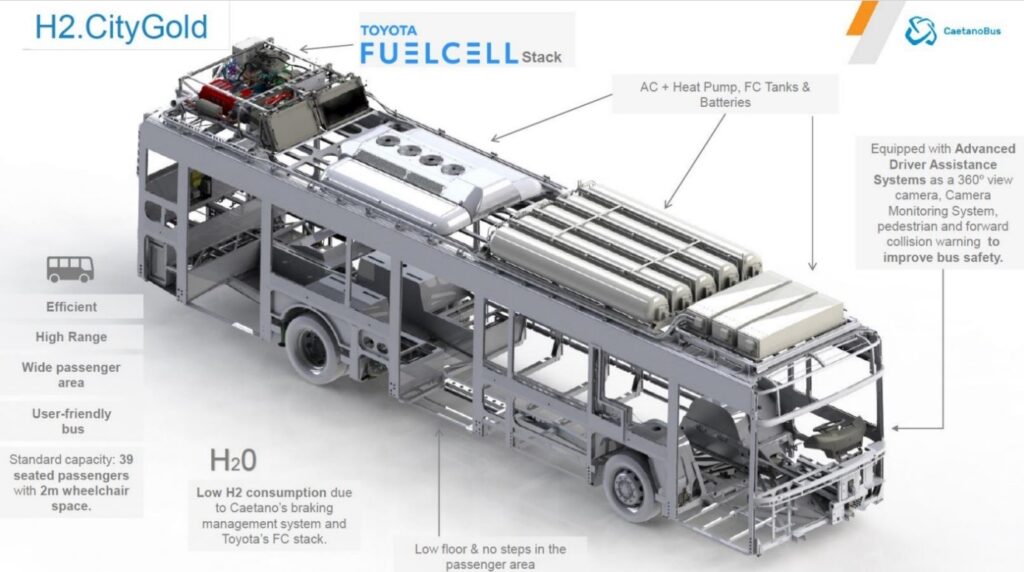 Source: https://caetanobus.pt/en/home-3/
Source: https://caetanobus.pt/en/home-3/
There are several key advantages of buses powered by hydrogen fuel cells. Firstly, they are virtually silent compared to traditional diesel buses, contributing to reduced noise in cities and improved quality of life for residents. Secondly, they have a comparable range to conventional buses, meaning they can handle long routes without the need for frequent recharging. A key advantage of hydrogen buses is their short refueling time, averaging around 15 minutes. Charging times for battery buses are longer, ranging from 3 to 5 hours depending on the method, using a plug-in charger, or approximately 1 hour when using a pantograph.
Despite many concerns, operating such buses is safe primarily due to the design of systems to prevent gas leaks and ignition risks in case of collisions. Importantly, hydrogen's properties make it potentially safer than well-known and commonly used conventional fuels in certain situations. Hydrogen is 14 times lighter than air, so in the event of a leak, it quickly dissipates into the air (in open space), reducing the risk of ignition.
However, despite numerous benefits, there are also challenges associated with the widespread introduction of buses powered by hydrogen fuel cells. One of the main problems is the hydrogen refueling infrastructure, which is still limited in many regions. Additionally, hydrogen production costs are currently relatively high, although it is expected that they will decrease over time with technology development. The cost of the vehicles themselves is also high at the moment, ranging from 800 000 to 900 000 EUR, although numerous grants from the European Union provide optimism that they can partially finance purchases.
In Poland, more and more cities are opting to purchase hydrogen buses. In Rybnik city alone, 20 new vehicles hit the streets at the end of last year. The plan is for 123 hydrogen buses to be operating on Polish roads by the end of the year.
Despite these challenges, buses powered by hydrogen fuel cells represent the future of public transport. Their ability to reduce harmful emissions and minimize their impact on the natural environment makes them an incredibly attractive option for cities and regions seeking sustainable transportation solutions. Further investments in the development of this technology and the associated infrastructure can accelerate the adaptation process and make hydrogen fuel cell-powered buses a common sight on city streets worldwide.
This article was created within a framework of CEESEU-DIGIT project to elevate the Green Transition in CEE Europe.
The CEESEU-DIGIT project has received funding from the European Union’s Programme for the Environment and Climate Action (LIFE 2014-2020) under grant agreement n° LIFE 101077297.
The information and views set out in this homepage are those of the author(s) and do not necessarily reflect the official opinion of the European Union or CINEA. Neither the European Union nor the granting authority can be held responsible for them.
Fifth Living Lab Meeting in Tartu Highlights Circular Economy's Role in Sustainable Development
On February 21st, the fifth Living Lab meeting, a collaboration between the Tartu City Government, Tartu County Municipalities Association, and Tartu Regional Energy Agency, took place. The focus of the meeting was on the opportunities of the circular economy and its role in achieving Tartu's climate goals. The event also marked the initiation of drafting Tartu's circular economy roadmap, a significant addition to the city's climate and energy plan.
Various representatives from different sectors came together to discuss the future objectives of the circular economy and lay the foundation for defining sector-specific goals. This collaborative effort aims to contribute to Tartu's sustainable development and align with its commitment to environmental responsibility. The Living Lab meetings serve as a platform for diverse perspectives, fostering innovation and collective strategies to address current challenges and work towards a more sustainable future for Tartu.
By the beginning of the new decade, the aim is to make Tartu County a leader in the circular economy in Southern Estonia and a valuable partner for other circular economy regions in Estonia and abroad. In contrast to the prevailing economic model centred around constant production, short product lifecycles, and single-use consumption, the circular economy promotes the prolonged use of materials and subsequent recycling or reuse. This approach aims to continually reintroduce previously produced items, reducing waste and pollution.
Tartu Deputy Mayor Raimond Tamm emphasised the significance of advancing the circular economy for Tartu, addressing both environmental concerns and fostering green innovation and entrepreneurship. Tamm stated, "We must collaboratively establish a unified system with municipalities and businesses, starting from production and concluding with reuse. This entails changes in consumer habits, company production processes, and waste management practices but ultimately provides entrepreneurs with an excellent opportunity to develop their production and enhance competitiveness."
The circular economy roadmap, uniting Tartu County municipalities, seeks to reduce waste generation and increase recycling in the region. Key focus areas encompass collaborative initiatives, renewable energy, sustainable food systems, agriculture and land use, industry, and services. This comprehensive approach not only fosters the emergence of new business models and enterprises in the region but also plays a pivotal role in minimizing the ecological footprint of production and consumption. Importantly, the roadmap aligns with and enhances Tartu's energy and climate plan, reinforcing its commitment to sustainable practices and shaping a resilient and environmentally responsible future for the community.
The creation of the roadmap is supported by the European Union through the projects 2ISECAP, CERITA, and TREASoURcE, as well as the EUKI project CURE+. These initiatives play a vital role in providing resources and expertise to advance the development of the circular economy in the region, underscoring the collaborative efforts to achieve sustainable and innovative practices.
DIGI-GREEN hackathon
Join us at the unique hackathon focusing on digital services supporting and leading a green transition. As part of this innovative event, participants will work on co-creating solutions using digital tools and data to help lead and support the biggest change of our generation – the green transition.
University of Tartu together with Garage48 invite you to embark on a unique hackathon in the dynamic fields of clean energy, sustainability, and digitalization.
DIGI-GREEN HACKATHON, happening on May 10-12 in Jõhvi, Ida-Virumaa focuses on leveraging digital tools and data to drive and champion a green transition, the most significant change of our era.
Our hackathon revolves around a central question: How can digital skills, knowledge, and data be wielded to foster the societal change we aspire to achieve? We will be co-creating innovative solutions under the mentorship of industry experts and state representatives, ensuring that the proposed ideas are not only visionary but also feasible within specific domains.
We’re inviting engineers, designers, public digital service experts, environmental experts, green transition experts, data experts, students, enthusiasts and visionaries from various fields to turn your expertise into a sustainable future. Let's turn our hackathon ideas into tangible, impactful projects and pave the way for a greener tomorrow!
Join us with or without an idea, as an individual or with team members. Hackathon teams are formed at the opening night around the top ideas pitched. Teamwork is guided by industry experts as mentors, throughout the weekend.
You can get inspired and learn more about the hackathon challenge, the data, and some great examples of digital green solutions out there, at the virtual pre-event on April 23rd.
Registration to the hackathon is open until 23.59 May 2nd 2024.
Read more and sign up: https://www.garage48.org/events/digi-green-hackathon
Facebook event: https://www.facebook.com/events/2180893068929515
The hackathon is organised by the ECePS ERA Chair that has received funding from the European Union’s Horizon 2020 research and innovation programme under grant agreement No 857622. The event is supported by the CEESEU-DIGIT project, funded by the European Union’s Programme for the Environment and Climate Action (LIFE 2014-2020) under grant agreement n° LIFE 101077297.
Views and opinions expressed are however those of the author(s) only and do not necessarily reflect those of the European Union or European Research Executive Agency. Neither the European Union nor the granting authority can be held responsible for them.
Medjimurje Energy Agency ltd. engaged in two new projects financed by Interreg DRP
After a great success in applying project proposals to the first call for proposals of the Interreg Danube Region Programme 2021 - 2027, Medjimurje Energy Agency Ltd. (further in text: Agency) has started the implementation of two projects Danube GeoHeCo and ESINERGY in cooperation with the partner consortia from different European countries. In the project Fostering the implementation of shallow Geothermal hybrid Heating and Cooling systems in the Danube Region (Danube GeoHeCo) the Agency is included as a lead partner, which means that it has a key role in the design and coordination of the entire project and directs the partnership towards achieving the defined project goals. The main goal of the Danube GeoHeCo project, which is currently also the Agency's largest project, is to encourage the use of shallow geothermal energy potential in the Danube region by encouraging the integration of shallow geothermal heat pumps into existing conventional fossil fuel heating and cooling systems. As part of the project, the investment of installing a geothermal heat pump into the existing heating and cooling system of a building owned by Medjimurje County will be implemented.
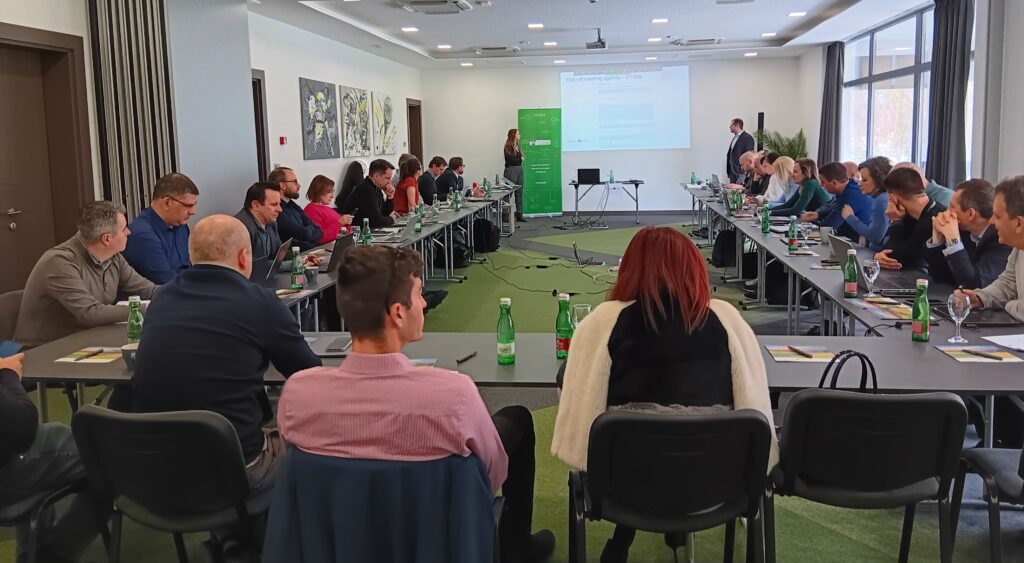 Photo: Kick-off meeting in Čakovec, 26th – 27th of March 2024
Photo: Kick-off meeting in Čakovec, 26th – 27th of March 2024
Agency joined the project Empowerment of the stakeholders in the implementation of the Directive on the promotion of the use of energy from renewable sources in terms of energy storages and energy networks stability (ESINERGY) as a project partner. The main goal of ESINERGY project is to solve one of the key problems in modern energy technology – managing the imbalance between the generated power and the load in the electrical network, which is not adequate to the upcoming needs such as the increase in consumption, energy demand, etc. As part of this project, the investment of installing a battery for energy storage with an upgrade of the existing system for smart measurement of energy consumption in the Administration Building in Čakovec Knowledge Center is planned, which will be financed from the budget of another Croatian project partner Medjimurje County (also the founder and owner of the Agency) in the amount of 50,000.00 EUR.
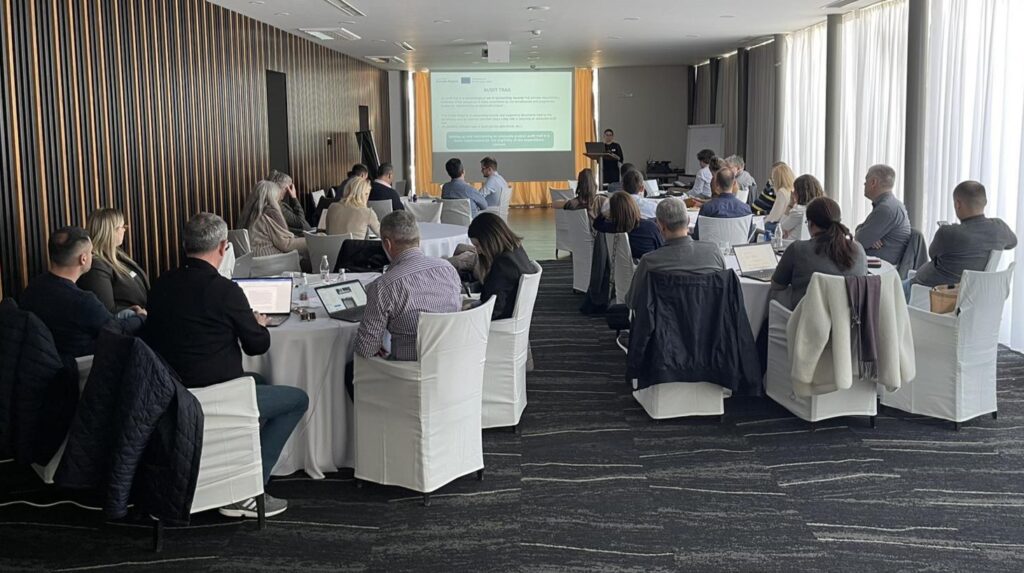 Photo: Kick-off meeting in Moravske Toplice, 14th – 15th of February 2024
Photo: Kick-off meeting in Moravske Toplice, 14th – 15th of February 2024
These two projects represent a significant step forward towards the achievement of sustainability and development goals, highlighting the Agency's commitment to encouraging the use of renewable energy sources such as geothermal energy and solar energy. Given that both projects are in the fourth month of its implementation, kick-off project partner meetings have already been held, one of which was organized by the Agency in Čakovec (Croatia) on 26th and 27th of March 2024, and the other was held on 14th and 15th of February 2024 in Moravske Toplice (Slovenia). During the two-day meetings, the partners had the opportunity to get to know each other and establish a joint cooperation in the implementation of these two projects and since both projects gather relevant experienced and expert organizations from different countries there is no doubt that all planned project objectives will be achieved.
It is necessary to increase the energy efficiency of buildings to reduce energy poverty
"Energy efficiency of buildings is the main solution for reducing energy poverty," this was the statement made at the workshop held on April 3rd in Alūksne city, Latvia, which the Vidzeme Planning Region organized within the framework of the CEESEU-DIGIT project.
Energy poverty is a significant problem in Europe. Its causes are found in the situation where energy costs in Europe are proportionally high compared to the population's income, and the buildings are energy inefficient. Energy poverty should not always be associated with socially vulnerable groups or the poor. This is often a sign that you are paying too much for your energy service, and you also need to look at it from a comfort perspective. However, in Latvia, to determine whether a household is affected by energy poverty, a household's income level and compliance with the status of a poor or low-income family are primarily assessed. In Europe, energy poverty indicators are looked at on a broader scale, assessing whether energy services are available in terms of price and whether it is possible to ensure adequate comfort in the home, not to endanger well-being and health. Inappropriate indoor temperatures can promote moisture and mold growth and lead to respiratory and heart diseases. Also, energy poverty can be attributed to external conditions that are difficult for the household to influence. For example, in multi-apartment buildings, where individual heating sources provide heat, the unoccupied apartments are often not heated during winter, so neighbors may have difficulties maintaining a suitable indoor temperature.
At the workshop in Alūksne, the Vidzeme Planning Region invited Selīna Vancāne, Ph.D. of Environmental Engineering of Riga Technical University, to tell more about the definition of energy poverty, legal framework, and solutions. Latvia has the most significant proportion of residents in Europe who live in multi-apartment buildings.
"The housing stock in Latvia is rapidly aging, characterized by the high energy consumption of the building and low thermal technical requirements. Energy poverty is formed by the poor condition of buildings in combination with low solvency. If we cannot improve the material well-being of each individual, then the energy efficiency of buildings should be improved," emphasized S. Vancāne. Considering that Latvian residents are exposed mainly to the risk of energy poverty and face difficulties in covering monthly housing bills, increasing the energy efficiency of multi-apartment buildings is possible if the investment in the property does not cause additional financial difficulties in the daily costs of the residents. This means that additional funding for the housing benefit should be provided if, after renovation, the monthly payment has increased compared to the situation if the building had not been renovated.
To carry out targeted support measures, it is necessary to identify the general condition of buildings in Latvia. S. Vancāne emphasized that buildings with the lowest energy efficiency indicators should be renovated as a priority, creating a separate support program for this, as determined by the recommendations of the European Commission. Currently, there is no necessary data to make a complete assessment of the housing stock in Latvia. In some municipalities, it is possible to integrate data by combining it with information on heat energy consumption, but in most of them, such data is not collected. The availability of such public information would promote citizens' understanding and involvement in the building renovation process and help citizens assess the property's energy efficiency level when purchasing a new property. A low energy efficiency class should be classified as a hazard indicator. In addition, attention should also be paid to those residents who are not included in the circle of beneficiaries of social support but still have difficulties paying energy bills and renovating the building. One-stop agencies' role in informing residents and providing advisory support on renovating multi-apartment buildings was also emphasized. Such an agency operates in Riga, where the Riga Energy Agency offers professional consultations and support for the renovation of apartment buildings. Currently, preparations are also being made in the Vidzeme region to create such a support point, which will be developed as part of the RenoWave project of the Interreg Baltic Sea Region program.
Within the framework of the CEESEU-DIGIT project, the Vidzeme Planning Region emphasized to local government specialists need to pay attention to measures to reduce energy poverty in their sustainable energy and climate plans. A helpful source of information for local governments can be the material prepared in 2021, EPAH Report: Tackling energy poverty through local actions ‒ Inspiring cases from across Europe. The material is available in Latvian: https://energy-poverty.ec.europa.eu/discover/publications/publications/epah-report-tackling-energy-poverty-through-local-actions-inspiring-cases-across-europe_en
In the second part of the seminar, Gulbene municipality specialist Krišjānis Upāns introduced the participants to the "Energy Equilibrium" platform, which was created to support municipalities and energy suppliers in decision-making, accelerate the use of local renewable energy resources and developing suitable energy accumulation infrastructures. More information: www.interreg-baltic.eu/project/energy-equilibrium-interreg-baltic-sea-region/
The workshop participants visited the Alūksnes Information and Service Center and the Alūksnes Business Station. Alūksnes Business Station was built to support entrepreneurship, and the building has become a home for four regional entrepreneurs. Both buildings were built in 2023, and energy-efficient solutions were implemented.




About the CEESEU-DIGIT project:
The CEESEU-DIGIT project is implemented within the framework of the European Union "Life" program. Its main goal is to develop and implement an energy and climate action plan in six regions of Central and Eastern European countries, including the Vidzeme planning region, as well as to improve the abilities of local governments to prepare, finance, and implement their energy and climate action plans in accordance with national and regional level energy planning documents. Read more about project activities in Latvia HERE.
This project has received funding from the European Union under grant agreement no. 892270. The authors assume all responsibility for the content of the workshops. It does not in any way reflect the official opinion of the European Union. Neither the European Commission nor EASME is responsible for the use of posted information.
For questions: Maija Rieksta, Vidzeme Planning Region, e-mail: maija.rieksta@vidzeme.lv, mobile no. 26099521
The information was prepared by Baiba Šelkovska, communication manager in the Vidzeme Planning Region. Contact: baiba.selkovska@vidzeme.lv
Solar workshops in the Broumov region - Czech Republic
Within the framework of the international project CEESEU-DIGIT, supported by the EU LIFE grant, energy training continued in the Broumov region, in the north-east of the Czech Republic. ENVIROS, in cooperation with the local Council for the Development of the Broumov Region, organised a workshop on photovoltaic planning in the town of Broumov. Fifteen representatives of the municipalities in the region met at the local town hall in the morning and a similar training for local companies took place in the afternoon at the local monastery.
The meetings included information on available subsidies, the different steps for energy planning for solar energy development It is encouraging to see investments in PV technologies gaining momentum in the region, with projects in various stages of preparation or construction in Broumov, Police nad Metují, Meziměstí and Žďár nad Metují.
The construction process of power plants begins with a feasibility study, which identifies which buildings are suitable, whether they have the appropriate roof, and what economic model of investment and operation is most appropriate. This also affects whether a battery will be installed at the power plant. After that, it's necessary to start the process of obtaining a building permit, and only then can one apply for an investment grant, usually from the Modernization Fund. Upon receiving the grant, the phase of project documentation and selection of the power plant contractor occurs, which is carried out through a tender process.
At the workshops participants also discussed the possible application of community energy. Community electricity sharing is newly defined by law and will be allowed from summer 2024. The newly introduced legislation marks a transformative step for the Czech electricity market, slated to commence on July 1, 2024. It paves the way for electricity sharing through a public distribution system, enabling a wider consumer base to access renewable energy sources. Complementing this initiative, the law also ensures the free installation of smart meters for all members of energy communities. These meters are crucial for the practical implementation of electricity sharing. Additionally, the legislation fortifies consumer rights within these energy communities by prohibiting unilateral changes to electricity supply contracts by traders, thereby offering enhanced protection to consumers.
Organization of public forums for energy renovation of households in 2024
In Croatia, Medjimurje Energy Agency Ltd. (MENEA) organised and also participated during January and February 2024 as external lecturer at several events organised by local governments connected to energy renovation of family houses.
The events were organised in order to inform citizens about the upcoming national call for energy renovation of family houses, as well as the conditions and criteria for obtaining co-financing according to the call. One public forum was organized by MENEA in January 2024, while the other two were organized by Municipalities of Sveta Marija and Gornji Mihaljevec on February 1st and 20th who initiated the organization due to high interest of their citizens in energy renovation of their homes.
During these events experts from MENEA informed the interested citizens on benefits of energy renovation in the spirit of the upcoming call for energy renovation of family houses under the national Programme for energy renovation of family houses, which is expected to be published on March 13th, 2024 by national Environmental Protection and Energy Efficiency Fund (Fund). This public call, for which a record 120 million euros are available, is intended for citizens who are owners or co-owners of family houses in which they have registered residence. The aim of the Programme for energy renovation of family houses, through which the renovation of over 25 thousand family houses has already been co-financed, and which the Fund implements in cooperation with the Ministry of Physical Planning, Construction and State Assets and the Ministry of Economy and Sustainable Development, is to promote energy efficiency measures and the use of renewable energy sources in households.
It is a known fact that citizens are a risk group that can hardly adapt to energy transition process without the support of expert organizations, and organizing such events raises awareness and educates citizens about the possibilities and advantages of energy renovation and how to perform such investments. With this in line MENEA has been providing systematic support to citizens in the Medjimurje region (Croatia) in the application and implementation of energy renovation projects for many years and will continue to do so in order to help citizens improve their living conditions and recognize their role in achieving climate neutrality.

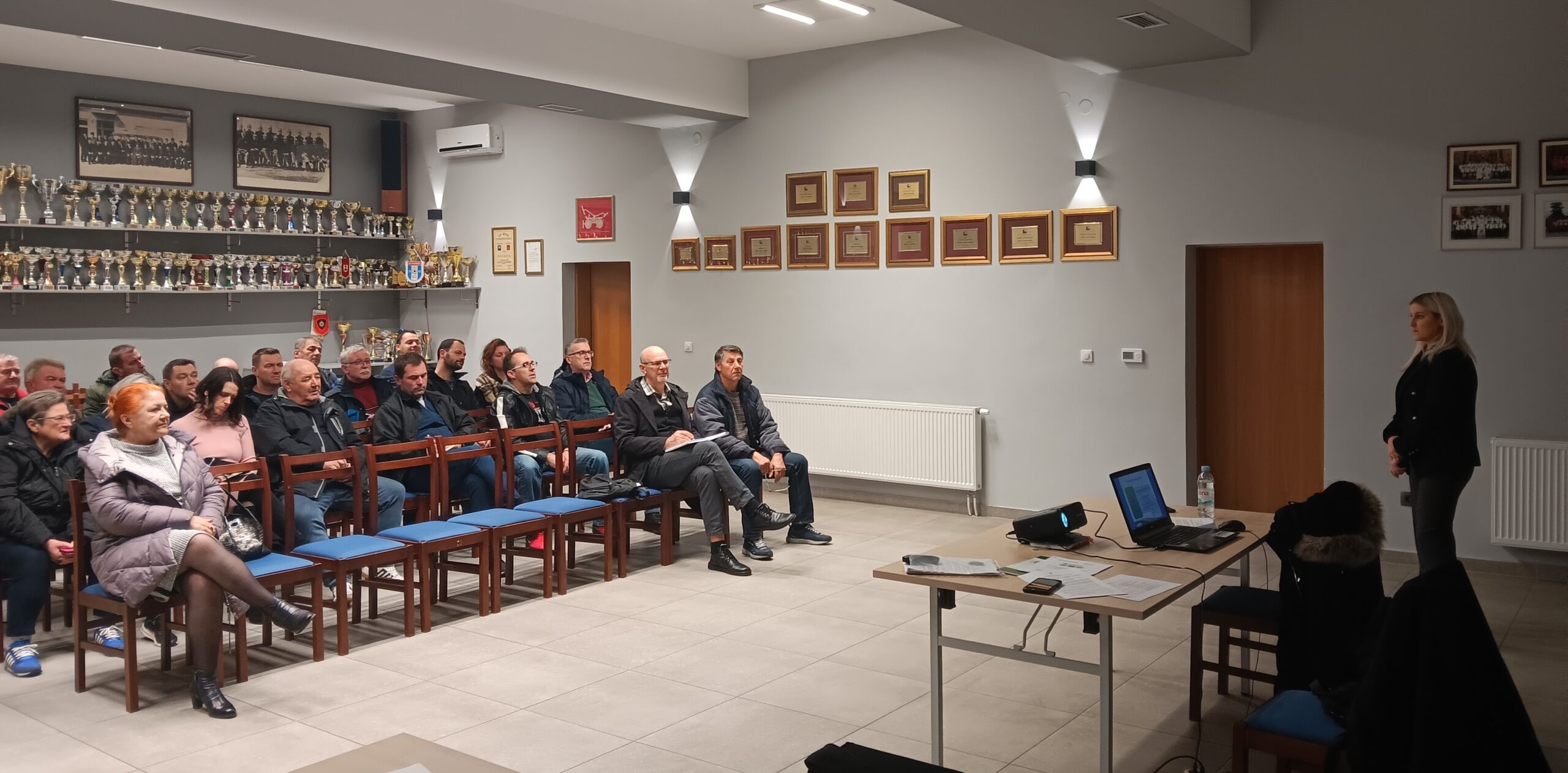

Empowering Residents: Workshops on Energy Efficiency and Renewable Energy Investments in Mazovia
Across Mazovia, Poland, a series of workshops conducted by Mazovia Energy Agency aimed at empowering residents to save energy and invest in renewable energy solutions has concluded. Held in two Warsaw districts – Bemowo and Żoliborz– and the Chorzele Municipality, these workshops were part of the CEESEU-DIGIT project, an initiative fostering social inclusion and promoting a Green Transition with a focus on just energy practices within the European Union.
These workshops specifically targeted vulnerable groups facing energy poverty and seniors. Energy poverty, the situation where a significant portion of income is spent on energy needs, can disproportionately affect these groups. The workshops addressed this concern by equipping participants with the knowledge and tools to make informed choices about energy consumption and explore renewable energy options.
The Just Transition Mechanism aligns with the European Green Deal goals to ensure that no one is left behind.
Building Awareness, Saving Energy:
The workshops focused on two key areas: energy-saving tips and financing opportunities for renewable energy investments.
The energy-saving segment equipped participants with practical strategies to reduce their energy footprint at home. Experts shared valuable insights on optimizing appliance usage, identifying energy-guzzling electronics, and adopting energy-efficient habits. This included tips on lighting, heating and cooling systems, water conservation, and standby power reduction. The workshops emphasized simple yet impactful changes that can lead to significant savings on energy bills.
You can learn more about useful Energy saving tips with our article in Polish here.
Unlocking Renewable Energy Solutions:
The workshops also delved into financing options for renewable energy investments in multi-apartment buildings and single houses. This included information on government grants, subsidies, and loan programs specifically designed to support renewable energy installations. With the rising popularity of solar panels, heat pumps, and other renewable technologies, the workshops aimed to bridge the gap between awareness and action for residents.
Challenges and Roadblocks:
However, the workshops also acknowledged the challenges faced by participants in pursuing energy efficiency and renewable energy:
- Financing hurdles: Obtaining financing for renewable energy system installations can be a significant obstacle. The workshops addressed this by providing information on available government grants, subsidies, and low-interest loan programs specifically designed to incentivize renewable energy adoption.
- Building management limitations: Residents in multi-family apartment buildings may not have complete decision-making power regarding building upgrades. The workshops offered strategies for building resident support and effectively communicating the benefits of renewable energy to building managers and co-tenants. This could involve organizing informational meetings, highlighting cost savings on energy bills, and emphasizing the environmental benefits.
- Lack of resident consensus: Gaining sufficient support from other residents in multi-apartment buildings can be challenging. The workshops provided tips on fostering community discussions, emphasizing shared benefits like lower energy bills for all residents, and showcasing successful implementations in other buildings.
- Building limitations: Not all buildings are readily adaptable for renewable energy installations. The workshops addressed this by exploring alternative solutions and exploring the possibility of phased upgrades. For instance, some buildings may be better suited for solar panels, while others might benefit more from heat pump installations.
Solutions and Moving Forward:
The CEESEU-DIGIT project recognized these challenges and offered potential solutions:
- Community outreach workshops: By holding workshops specifically for building managers and residents together, the project fostered communication and encouraged collaboration.
- Information dissemination: Creating clear, accessible resources that highlight the financial and environmental benefits of renewable energy can empower residents to advocate for change within their communities.
- Technical expertise: Providing access to technical experts who can assess building suitability and recommend the most appropriate renewable energy solutions can significantly ease the decision-making process.
The workshops within the CEESEU-DIGIT project showcased a successful model for promoting social inclusion in the Green Transition. By focusing on vulnerable groups and seniors, the project ensured that no one is left behind as we move towards a more sustainable future.
These workshops in Mazovia serve as a positive example for future initiatives. As the Green Transition gathers momentum, replicating this model in other regions and tailoring it to local needs can significantly contribute to a more inclusive and sustainable energy future across Europe.
This article was created within a framework of CEESEU-DIGIT project to elevate the Green Transition in CEE Europe.
The CEESEU-DIGIT project has received funding from the European Union’s Programme for the Environment and Climate Action (LIFE 2014-2020) under grant agreement n° LIFE 101077297.
The information and views set out in this homepage are those of the author(s) and do not necessarily reflect the official opinion of the European Union or CINEA. Neither the European Union nor the granting authority can be held responsible for them.
CEESEU-DIGIT trainings in the Vidzeme region bring municipal environmental specialists and energy managers together
Since the fall of 2023, the Vidzeme Planning Region team has been organizing energy management trainings in various municipalities of the Vidzeme region in Latvia. The primary objective of these trainings is to enhance the knowledge of energy managers and other specialists in developing sustainable energy and climate action plans.
So far, three practical trainings have been held, which discussed such topics as municipal energy and climate action plans (ECAP plans) in the context of national and European energy and climate policies, the involvement of the private sector in the development and implementation of ECAPs, energy consumption data and measures to adapt to climate change.
Municipal energy managers participate in training where they share their experiences working with energy and climate issues. The energy data monitoring system is an essential basis for determining the long-term goals of municipalities, both by increasing energy efficiency and reducing the impact of climate change. Not all Vidzeme region municipalities have a specialist - energy manager, and many places have not yet implemented an energy management system.
The present energy managers said that most of their daily duties are spent on surveying facilities, eliminating errors, and only then efforts to create an energy consumption database. The audience says that the energy manager is not the creator of the data array. Still, the energy consumption data must be collected using remote reading devices in the facilities and combined into a unified accounting system. In addition, the task of the energy manager is to analyze these data, to provide data-based suggestions for increasing the energy efficiency of buildings, and to react when an unusual situation appears in the energy management software, which should not occur during certain hours of the day.
"If energy consumption data is low quality, is it worth collecting?" This was one of the questions raised in one of the trainings. The answer is YES - it is worthwhile to perform approximate calculations of SEG emissions for those sectors (households, manufacturing sector, private transport, agriculture) where currently obtaining energy consumption data is difficult. One example is households that use individual heating systems with wood heating for heat supply. To obtain at least approximate data on households, a study can be conducted in which households are identified in the form of a survey, and data on the type of heating source and its volume are obtained.
Each workshop includes theoretical lectures using the CEESEU project materials, inviting lecturers and energy experts in person, and organizing practical working groups to promote cooperation between local municipalities. In one of the working groups, municipal specialists looked at the maps of several Vidzeme cities and tried to identify areas sensitive to climate change. More than 30 solutions were evaluated from other countries, mainly from Romania and Hungary, which can help prevent flood risks and the formation of heat islands more successfully.
Each workshop takes place in a different municipality, during which the municipality also leads the exchange of experiences to an object vital to it. So far, the seminars have been held in the Valmiera municipality - Kocēni, Valka, and Cēsis cities. The next training will be held on April 3 in Alūksne city, focusing on energy poverty and a just energy transition.
The CEESEU-DIGIT project is implemented within the framework of the European Union "Life" program. Its main goal is to develop and implement an energy and climate action plan in six regions of Central and Eastern European countries, including the Vidzeme planning region, as well as to improve the abilities of local governments to prepare, finance, and implement their energy and climate action plans in accordance with national and regional level energy planning documents. Read more about project activities in Latvia HERE.
This project has received funding from the European Union under grant agreement no. 892270. The authors assume all responsibility for the content of the workshops. It does not in any way reflect the official opinion of the European Union. Neither the European Commission nor EASME is responsible for the use of posted information.
For questions: Maija Rieksta, Vidzeme Planning Region, e-mail: maija.rieksta @vidzeme.lv, mobile no. 26099521
The information was prepared by Baiba Šelkovska, communication manager in the Vidzeme Planning Region. Contact: baiba.selkovska@vidzeme.lv
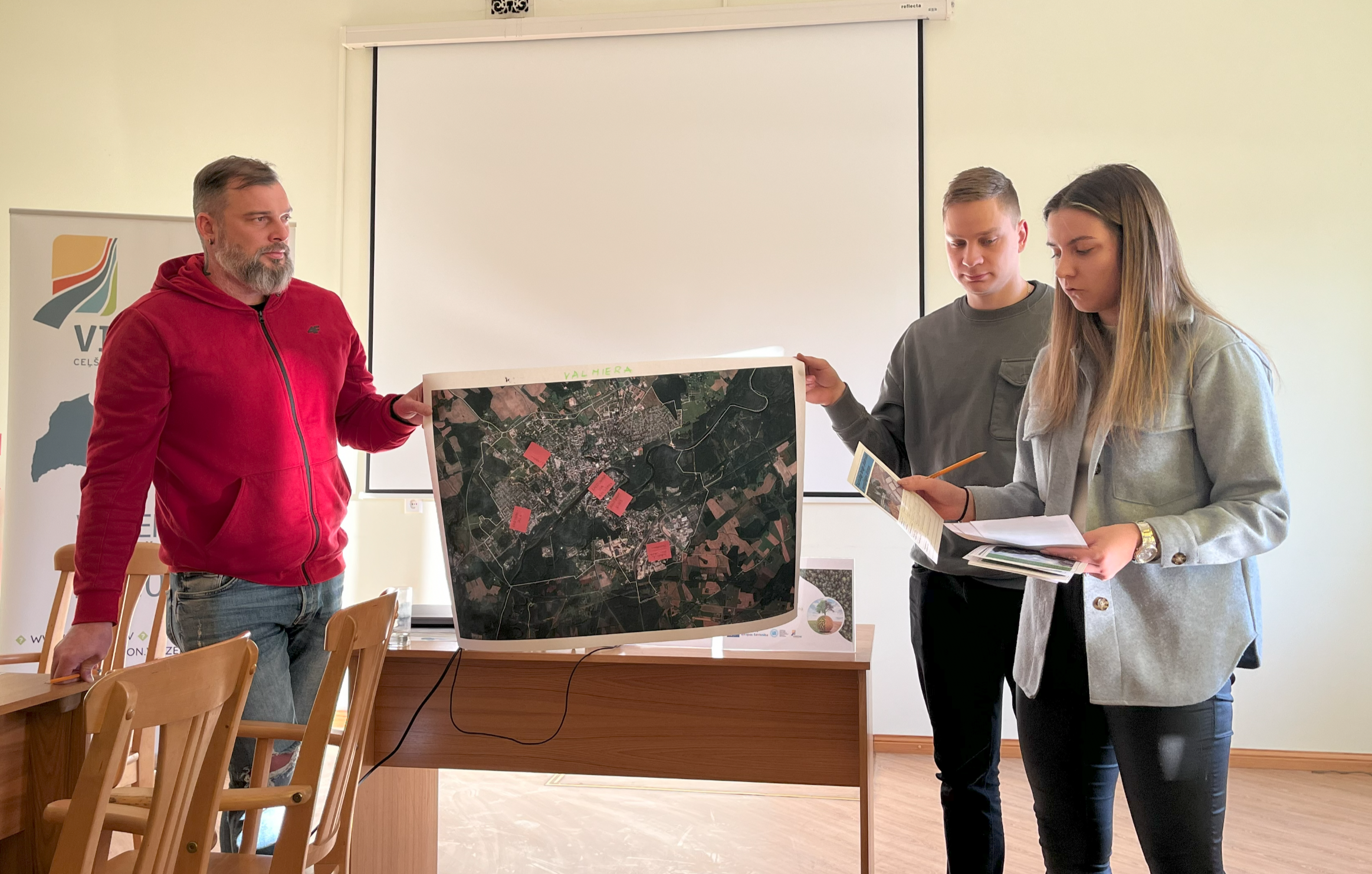


Energy Cooperative Launched by Hnutí DUHA Movement in Czech Republic
The newly formed Energetické družstvo Hnutí DUHA, first energy coopertative in Czechia, aims to revolutionize the renewable energy sector by collectively managing and developing renewable energy sources to meet the needs of its members. Launched in December 2023, the cooperative focuses on producing and sharing electricity through community energy, promoting good practices, and educating on sustainable energy use. Membership requires a minimum deposit of CZK 5,000 (€200) but the deposit could be higher. Regardless of investment size, each member gets an equal say in cooperative decisions. Currently, the cooperative already has around 200 members. The cooperative is structured to empower its members through openness, environmental conservation, and ethical investment in modern energy solutions.
The first initiative is a photovoltaic system at the one organic farm in Czechia. Part of the produced energy will be consumed by the farm and the surplus will be sold on the market or, distributed among members, in line with new Czech legislation effective from July 2024. Future profits will be paid back to members based on their deposit size.
Looking ahead, the cooperative plans to explore alternative energy projects, including wind, biomass cogeneration, and energy storage.
For further details, visit the website.
Cover photo: Photo by Narcisa Aciko: https://www.pexels.com/photo/photo-of-wind-turbines-lot-1292464/
The development of wind energy in Poland
written by Mazovia Energy Agency (Poland)
Wind conditions for Energy purposes in Poland are defined as medium but high enough to provide potencially efficient source of renewable energy. For the whole country, average annual wind speeds range from 2.6 m/s to 3.8 m/s. Poland has the potential to build off-shore wind farms with a capacity of 3 GW by 2025 and 6 GW by 2030. Implementation of off-shore investments in Polish sea areas may add value to the Polish economy in the amount of over 81 billion PLN by 2030 and create a total nearly 25 thousand new workplaces. When it comes to big investments, we have heard about one in Poland lately. Let’s talk about a Budzyń windfarm.
In Budzyń, a city located in western Poland, a new wind farm has been realized by the fourth largest wind energy company in the world, named EDP Renewables. The new wind turbines complex, with its 35 structures can cover the demand of 85 000 people with a total capacity of 70 MW. It is a great result not only for the region but also for the entire state of Poland.
The farm is located in the fields between three cities: Wyszyny, Bukowiec and Sokołów Budzyński. The Budzyń wind farm can provide energy with the CO2 emissions of 215 000 ton per year.
In the age of energy crisis in Poland that investment could not be better. This wind farm will contribute to lower energy prices, create new workplaces, contribute to the development of infrastructure and result in tax revenues for local authorities and communities.
The city mayor said that as a country we are facing a harsh winter, perhaps we are facing a lack of electricity during the winter. This investment, like no other fits perfectly into the energy balance of our country. In turn, it will be a source of constant budgetary income for our commune in the future.
He also estimates that the commune budget will receive 3-4 million PLN annually thanks to the construction of the farm.
- https://pl.wikipedia.org/wiki/Energetyka_wiatrowa_w_Polsce
- https://chodziez.naszemiasto.pl/budzyn-farma-wiatrowa-firmy-edp-renewables-otwarta-jej-moc/ar/c3-9051325
- https://ceesen.org/2023/03/08/new-wind-farm-in-western-poland/
Cover picture: https://pl.wikipedia.org/wiki/Energetyka_wiatrowa_w_Polsce#/media/Plik:Elektrownia_wiatrowa_ko%C5%82o_Kisielic.jpg
CEESEU-DIGIT: Children as Advocates for Sustainable Environmental Practices!
Estonia, with its focus on youth and the historically industrial region of Ida-Virumaa, exemplifies a region in transition, while it embraces environmental transformation. Recognizing the importance of equipping the younger generation in this area with essential knowledge, CEESEU-DIGIT strategically directs its educational efforts there.
The mission of the CEESEU-DIGIT project, initiated in December 2022, centers around the development of innovative regional energy and climate plans (ECAP) across six target areas in Central and Eastern Europe. Building upon the foundations laid by the preceding CEESEU initiative, this project aims to address pressing environmental challenges. Furthermore, CEESEU-DIGIT remains dedicated to safeguarding vulnerable social groups and combatting energy poverty while pursuing its climate protection objectives.
Estonia is one of the six target areas of the project while focusing particularly on the Ida-Viru region, which is historically known for its involvement in oil shale mining. Given the region's industrial background, it currently encounters significant challenges related to the transition towards more environmentally sustainable practices. To ensure a seamless transition, the project recognizes the importance of actively addressing the ongoing shift and simultaneously educating the youth in the area about sustainable solutions for a green transition and future prospects.
Green transition events for youth of Ida-Virumaa
- Educational eco-creative workshop for children at Narva-Jõesuu solar park
Elis Vollmer and Julia Golubeva from the University of Tartu's CEESEU-DIGIT project team participated in an event with a clear mission: to raise awareness about green transition. In collaboration with the Narva-Jõesuu Municipality, the event aimed to educate both children and adults on waste sorting and environmental concerns, using engaging coloring books to illustrate important concepts. Discussions centered on climate change, fostering a deeper understanding of environmental challenges. As a result of this informative and interactive workshop, participants, both children, and parents, crafted paper ladybugs, symbolizing their commitment to preserving and enhancing biodiversity.
- Green playroom: children's camp at Olgina Community Cente
Julia Golubeva, a member of the CEESEU-DIGIT project team at the University of Tartu, organized a dynamic workshop for children at a camp. The workshop, in collaboration with the Narva-Jõesuu Leisure Centre, focused on biodiversity preservation and environmental awareness. Children learned essential skills, such as proper waste sorting, and engaged in discussions about climate change. The workshop also included engaging games about Lake Peipus’ biodiversity, exploration of different energy sources, and bird-themed activities to enhance their knowledge of Estonian parks. The children's enthusiasm for sharing insights on the vital role of bees and pollinators in human life was inspiring. They also created paper ladybugs as a symbol of their commitment to biodiversity preservation. The event aimed to empower the younger generation to take practical steps, such as creating water bowls for insects and attracting pollinators to their gardens, all contributing to a greener, more sustainable future.
- Green playroom: Oxforell Holiday Center's camp for children from orphanages in Ida-Viru County
The event involved a group of children from orphanages, a vulnerable demographic that receives special attention in the CEESEU-DIGIT project. The primary goal was to raise awareness and knowledge about the green transition, ensuring inclusivity in implementing energy and climate plans at the local level. In collaboration with two non-profit organizations in Ida-Viru County, the workshop organized a green playroom for the camp's children. Caregivers were on hand to provide assistance and maintain a safe environment.
Children actively participated in various activities, including waste sorting, biodiversity games, and discussions on climate change. They created paper ladybugs as a symbol of their commitment to biodiversity preservation and learned about greenhouse gas emissions through the "Climate School" card game. The workshop also featured math tasks and mazes related to pollinators and practical tips for supporting insects in gardens. The level of engagement varied with age, but all activities aimed to keep the children motivated and focused. Volunteer-assistants provided musical breaks with an electric guitar to create a pleasant atmosphere.
- Family day fun: green playroom workshop for children and adults at Sinimäe Village Square
In collaboration with the Narva-Jõesuu Leisure Centre for Family Day, the event provided an opportunity for both children and adults to learn and engage. Participants gained insights into proper waste sorting, played a biodiversity game related to Lake Peipus, explored different energy sources, and enjoyed a bird-themed dominoes game featuring Estonian park birds. The workshop also involved creative activities, such as drawing and coloring to highlight the importance of pollinators like bumblebees and bees.
In addition to environmental awareness, participants crafted paper ladybugs symbolizing their commitment to biodiversity preservation. They expanded their knowledge through the "Climate School" card game, focusing on the impact of greenhouse gas emissions on the environment. As waste sorting is a current concern in Ida-Viru County, a waste sorting game challenged participants of all ages. Despite initial challenges, everyone successfully mastered the task with the help of clear instructions.
- Family picnic, concert and workshop at Jõhvi city park
The event aimed at educating both children and adults about the green transition. Collaborating with the Jõhvi Culture and Leisure Centre, the event emphasized waste sorting and engaging activities, including discussions on climate change and crafting paper ladybugs to promote biodiversity preservation.
Children demonstrated proficiency in waste sorting, while adults expressed concerns about potential job losses in the transition from shale energy. Residents in some areas of Kohtla-Järve faced challenges with limited waste sorting facilities. An employee from Eastman Specialities OÜ expressed interest in further discussions about a just transition.
During interviews, it became apparent that waste sorting practices varied, with one interviewee sharing experiences from the Czech Republic, where sorting is more stringent. Adults expressed a strong desire for more information about the green transition process and inquired about a CEESEU-DIGIT project website or Facebook page.




The CEESEU-DIGIT project has received funding from the European Union’s Programme for the Environment and Climate Action (LIFE 2014-2020) under grant agreement n° LIFE 101077297.
The information and views set out in this homepage are those of the author(s) and do not necessarily reflect the official opinion of the European Union or CINEA. Neither the European Union nor the granting authority can be held responsible for them.
Passive houses – basic principles
The term passive house refers to the highest quality energy-saving construction, with very low heat demand for heating, without the use of radiators. The very concept of "passive" should be understood as opposing the active heating system based on the combustion of non-renewable fuels. The idea of a passive houses is to provide its users with climatic comfort both in summer and winter, i.e. during the period when heat is provided by passive heat sources and heat recovered from ventilation.
The term passive construction refers to the highest quality energy-saving construction, with very low heat demand for heating, without the use of radiators. The very concept of "passive" should be understood as opposing the active heating system based on the combustion of non-renewable fuels. The concept of a passive building was born as a response to the need to combine building energy efficiency, optimal thermal comfort, high indoor air quality and saving natural resources. As a result, five basic principles were created, which have been present since the design stage of passive buildings.
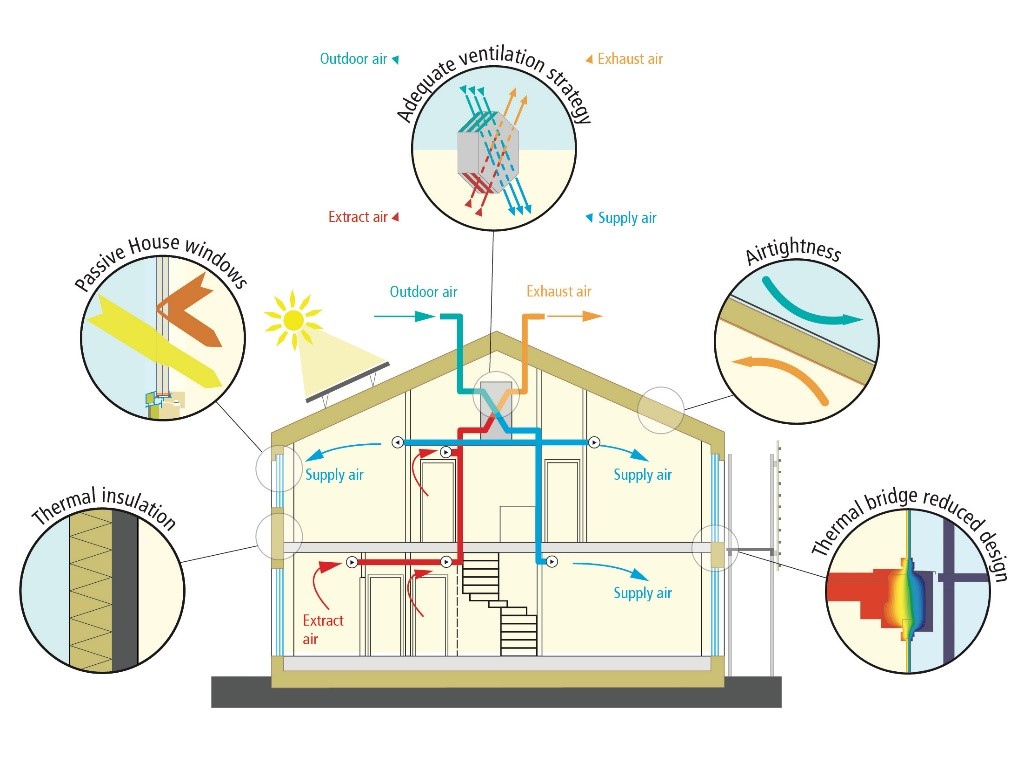 Figure 1 - Five principles of passive houses (source: https://passiv.de/en/02_informations/02_passive-house-requirements/02_passive-house-requirements.htm)
Figure 1 - Five principles of passive houses (source: https://passiv.de/en/02_informations/02_passive-house-requirements/02_passive-house-requirements.htm)
Thermal insulation
All opaque building components of the exterior envelope of the house must be very well-insulated. For most cool-termperate climates, this means a heat transfer coefficient (U-value) of 0.15 W/(m²K) at the most, i.e. a maximum of 0.15 watts per degree of temperature difference and per square metre of exterior surface are lost.
Passive House windows
The window frames must be well insulated and fitted with low-e glazings filled with argon or krypton to prevent heat transfer. For most cool-termperate climates, this means a U-value of 0.80 W/(m²K) or less, with g-values around 50% (g-value= total solar transmittance, proportion of the solar energy available for the room).
Ventilation heat recovery
Efficient heat recovery ventilation is key, allowing for a good indoor air quality and saving energy. In Passive House, at least 75% of the heat from the exhaust air is transferred to the fresh air again by means of a heat exchanger.
Airtightness of the building
Uncontrolled leakage through gaps must be smaller than 0.6 of the total house volume per hour during a pressure test at 50 Pascal (both pressurised and depressurised).
Absence of thermal bridges
All edges, corners, connections and penetrations must be planned and executed with great care, so that thermal bridges can be avoided. Thermal bridges which cannot be avoided must be minimised as far as possible.
Author: Mazovia Energy Agency (Poland)
LIFE-BECKON - Call for replication
Accelerate your local energy transition by supporting the set-up of energy communities
Call for replication – Apply now!
BECKON supports a wider range of local authorities, energy agencies and energy communities in starting out or proceeding in their efforts to support collective energy actions. Therefore, BECKON launched an open call for replication on 16 October 2023. The goal is to enable local authorities to set up TAOs and to familiarise them with the concept of energy communities, empower them to create spaces for such citizen-centred energy projects and support them.
Learn more about the call in this video!
We invite local authorities, municipalities in cooperation with energy communities and energy agencies to apply for the open call for replication to receive the following support and service package and come on a learning journey with LIFE-BECKON:
- Access to the LIFE-BECKON One-Stop-Shop (OSS) platform providing guidance to information, documents, templates you need for your specific needs; in addition, you get access to our pilots community and to experts who can assist you
- Participation in 3 half-day workshops in which you learn from our pilots how to run a successful OSS and about adequate business models, legal frameworks etc.
- 3 Webinars / trainings + 15 Direct one-hour support sessions / mentoring session + 1 Webinar on how to use OSS
- Technical & commercial assistance
- Information in your local language (“How to”-technical paper for public authorities; Country-specific guidelines for replicating OSS locally)
- Access and exchange with the networks of Climate Alliance, the Covenant of Mayors and the Climate Pact
Apply now!
Who can apply?
Applicants can either be municipalities by themselves, municipalities in cooperation with energy communities, local authorities such as regions by themselves or in cooperation with energy communities and local or regional energy agencies looking to support energy communities.
Have questions? Contact us at beckon(at)climatealliance.org, find further information in the call description and be sure check out this video about the call!
The deadline for applications is 15 February 2024. Applicants will be selected soon after, and the learning programme will start in March 2024.
Be part of a huge community driving forward the energy transition via energy communities!
About the LIFE BECKON project
The LIFE BECKON project is a European project funded by the LIFE programme, which is dedicated to enable municipalities to better support energy communities in their territories by setting up Technical Assistance Offices (TAO). Currently, LIFE BECKON is implementing TAOs in three local authorities that are piloting the activity: Copenhagen in Denmark, the Province of Ávila in Spain and Sofia’s energy agency in Bulgaria.
Technical Assistance Offices can be part of the local authorities’ administration and support initiatives and citizens in setting up energy communities.
Energy communities
Energy communities represent a disruptive opportunity to achieve a just and climate-friendly energy system. An energy community is a community that works and invests together to develop a sustainable energy system to enhance quality of life and economic competitiveness of a local context, empowering people by connecting sustainable energy, local economic development, and public wellbeing.
The CEESEN-BENDER project has been launched
International experts are developing support services for tackling energy poverty and renovating Soviet-era buildings in CEE countries
Experts from Central and Eastern Europe have cooperated in EU-funded CEESEN-BENDER project to empower and support vulnerable homeowners and renters living in Soviet-era multiapartment buildings in 5 CEE countries: Croatia, Slovenia, Estonia, Poland, and Romania. The project will help them through the renovation process by identifying the main obstacles and creating trustworthy support services that include homeowners, their associations, and building managers.
Today, buildings are responsible for 40% of Europe’s total energy consumption. Therefore, EU policy has prioritised the identification of dwellings and citizens at a higher risk of energy poverty in order to develop effective strategies for building renovation. In accordance with energy efficiency’s first principle, building renovation must be prioritized when discussing the overall solution to energy poverty. Furthermore, addressing energy poverty, like energy transition in general, should be socially just and inclusive.
In order to address these problems, consortium of partners has been funded from EU’s LIFE programme in order to implement the CEESEN-BENDER project (“Building intErventions in vulNerable Districts against Energy”), which was launched on September 1, 2023 and will last until August 31, 2026.
First, The project will analyze the ownership structure and physical characteristics of buildings in the 5 pilot sites in targeted regions (Estonia, Slovenia, Poland, Romania, and Hungary) to comprehensively understand the underlying obstacles that impede or halt homeowner associations, landlords, and property managers from pursuing energy renovations. At the same time, partners of the project will identify both legislation and financial, and technical administrative obstacles for the renovation in pilot countries. The identification of obstacles from the homeowners’ perspective will help the creation of tailor-made solutions not only for homeowners but also for building managers, landlords, municipalities, and other relevant stakeholders involved in the renovation process.
As a part of the project, tools that can be used to address different aspects of energy poverty will be developed. This includes data gathering on energy poverty in the pilot sites, creating a digital tool identifying buildings with high levels of energy-poor households in greatest need of renovation, creating a model of potential savings in buildings undergoing renovation, and creating a tool for calculating the return on investment for energy renovations.
Within the project, 5 pilot area roadmaps will be developed, that prioritize building renovation based on their potential for maximizing emissions reduction via energy savings as well as an increase of quality of life and wellbeing for vulnerable homeowners. Within the 5 pilot areas, at least 30 building-level roadmaps will be created that specify the technical details for renovations. The project partners will help these pilot buildings in the entire pre-construction phase from drawing of plans, to applying for permits, audits, or other requirements for financing. Plans will call for the decarbonization of the heating and cooling supply and integration of renewable energy sources (RES), to produce energy to cover its own consumption.
Also, a support system will be created for homeowners, municipalities, and other large owners of multiapartment buildings in the targeted regions to speed up the renovation process. This includes training at least 3500 homeowners, landlords and building managers on legal, financial, technical and other aspects of energy renovations. In addition, it entails advocating for changes of regulatory requirements and policies to lower the costs and time needed for the preparatory phase of projects. Also, at least 30 energy professionals will be trained on energy poverty and related topics.
 CEESEN-BENDER's project coordinator is Society for Sustainable Development Design (DOOR) from Croatia. Other partner organisations of the project include University of Tartu (UTARTU), Local Energy Agency Spodnje Podravje (LEASP), Alba Local Energy Agency (ALEA), Climate Alliance (CA), Medjimurje Energy Agency (MENEA), Mazovian Energy Agency (MAE), Tartu Regional Energy Agency (TREA), Municipality of Alba Iulia (ALBA IULIA), and Central Eastern European Sustainable Energy Network (CEESEN). Associated partners of the project are Housing Cooperative “Marysin Wawerski” (SM Marysin Waw), EUROLAND Ltd. (Euroland), GP STANORAD Ltd. (GP STANORAD) and the Estonian Union of Co-operative Housing Associations (EKYL).
CEESEN-BENDER's project coordinator is Society for Sustainable Development Design (DOOR) from Croatia. Other partner organisations of the project include University of Tartu (UTARTU), Local Energy Agency Spodnje Podravje (LEASP), Alba Local Energy Agency (ALEA), Climate Alliance (CA), Medjimurje Energy Agency (MENEA), Mazovian Energy Agency (MAE), Tartu Regional Energy Agency (TREA), Municipality of Alba Iulia (ALBA IULIA), and Central Eastern European Sustainable Energy Network (CEESEN). Associated partners of the project are Housing Cooperative “Marysin Wawerski” (SM Marysin Waw), EUROLAND Ltd. (Euroland), GP STANORAD Ltd. (GP STANORAD) and the Estonian Union of Co-operative Housing Associations (EKYL).
The CEESEN-BENDER project has received funding from the European Union’s Programme for the Environment and Climate Action (LIFE 2021-2027) under grant agreement n° LIFE 101120994. The budget of the project is EUR 1.85 million, of which the amount of EU support is EUR 1.75 million.
More information about the project can be found here: https://ceesen.org/about-ceesen/ceesen-bender/
Additional information:
Matija Eppert
Project Lead for CEESEN-BENDER
matija.eppert@door.hr
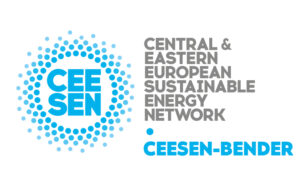
Electrict vs hydrogen vehicles
The actual need, caused by the rising climate changes and pollutions, of a more sustainable way of living has initiated many debates within many sectors. Among these, the impact generated by the transport sector, and most in general by any type of vehicle utilization, results one of the main responsible for the emissions due to the fossil fuels usage. Recent decisions - as the one to stop and ban the production of fossil fuel and hybrid vehicles from 2035, result as a great springboard for the diffusion of electric vehicles into the market. They are more sustainable under many aspects but that aspect has to face the growth of hydrogen vehicle production, which technology is taking bigger and bigger steps. It is important to understand the existing technical and practical differences between the two technologies. While the first one depends totally from a proper lithium-ion battery that sustains the entire vehicle necessities, from the engine to the implemented devices, the hydrogen vehicle’s engine comes from the reaction between hydrogen and oxygen inside the fuel cell, as a result of which the electricity that feed the electrical motor, and the water vapor are.
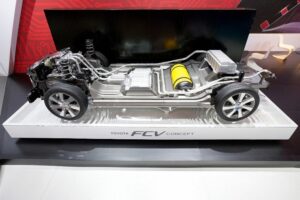
Even if both are green and valid solutions, as declared by an article of the French group Renault, these new technologies present different problems. The potential and sustainability of hydrogen vehicles is higher than the electrical ones, thanks to the availability of the fuel (endless) and the production of water vapor as the only by-product of the reaction. Unfortunately, high costs of vehicles, scarcity of filling stations and inadequate infrastructures are curbing its spread. The logistic problem results in the principal break for the market of hydrogen.
For the electrical vehicles, which production is rising all over the world especially after the decisions of European Commission, the interest is higher. In many countries, especially in the Old Continent and the States; the infrastructure is rapidly evolving with the diffusion of charging stations. The issues linked to this technology are represented by the cost of vehicles, still very high because of the production costs and extraction of materials. For instance, lithium which is a main component of the battery that has to be treated (this processes produce high quantities of CO2) is not available all over the world but only in some specific places, the limited autonomy of batteries and high costs for their substitution or reparation is significantly increasing the cost. If the problem of infrastructures seems to be ready to disappear in many countries this technology will depend on the electricity market and its variations for its entire cycle of usage.
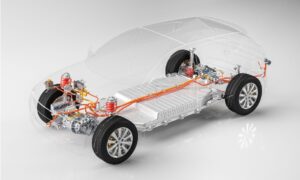 The gap between the diffusion of these two technologies has been presented by an article of HydrogenInsight, showing the German case, more precisely of the region of Cologne, where 1617 electric buses are now present, against the only 145 that use hydrogen fueled. With the target of reducing emissions caused by the transport sector by another 40% up to 2030, the nation has planned to increase the number of hydrogen vehicles up to an estimated number of 917 units. As previously cited, because of the cheapest technology and the already present infrastructures, the electrical vehicles are expected to follow the same trend, reaching more than 7300 units by 2030. Despite the difficulty of the hydrogen application of emerging in the automotive sector at an affordable price the German region is ready to set up new investments for the development of hydrogen vehicles and the improvement of the infrastructure’s status.
The gap between the diffusion of these two technologies has been presented by an article of HydrogenInsight, showing the German case, more precisely of the region of Cologne, where 1617 electric buses are now present, against the only 145 that use hydrogen fueled. With the target of reducing emissions caused by the transport sector by another 40% up to 2030, the nation has planned to increase the number of hydrogen vehicles up to an estimated number of 917 units. As previously cited, because of the cheapest technology and the already present infrastructures, the electrical vehicles are expected to follow the same trend, reaching more than 7300 units by 2030. Despite the difficulty of the hydrogen application of emerging in the automotive sector at an affordable price the German region is ready to set up new investments for the development of hydrogen vehicles and the improvement of the infrastructure’s status.
In conclusion it can be confirmed that nowadays electrical vehicles are preferred over the hydrogen ones, but this latest technology shows a great potential, for the next decades, as one of the principal solution for the reduction of emissions and the consequent growth of our sustainability, in automotive sector and many others.
Text source: www.renaultgroup.com
Photo sources: www.which.co.uk, www.edmunds.com
Wiener Neustadt is 1 out of 10 Austrian „Pioneer cities”
Wiener Neustadt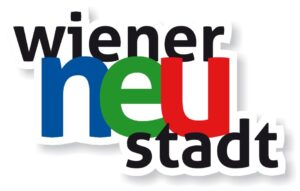 lies 50 kilometers south of Vienna and has approximately 50.000 inhabitants. Wiener Neustadt has diverse regional functions such as authority town, school town, transport hub, economic center, research and university location, etc.
lies 50 kilometers south of Vienna and has approximately 50.000 inhabitants. Wiener Neustadt has diverse regional functions such as authority town, school town, transport hub, economic center, research and university location, etc.
Since 1995, the city of Wiener Neustadt has set the course for a long-term municipal energy strategy (and later increasingly for a climate strategy). Since then, several energy concepts, a climate change adaptation strategy and a 2021 urban development plan for Wiener Neustadt (2021 STEP WIENER NEUSTADT 2030+) have been developed. The recent urban development plan STEP WIENER NEUSTADT 2030+ distinguishes between climate protection and climate change adaptation. The climate neutrality roadmap “Climate Neutral Wiener Neustadt 2040”, which is currently being developed, has initiated a fundamental discussion process. Comprehensive planning, operationalization and ambitious implementation as well as ongoing monitoring for a “climate-neutral Wiener Neustadt” has motivated Wiener Neustadt to go one step further.
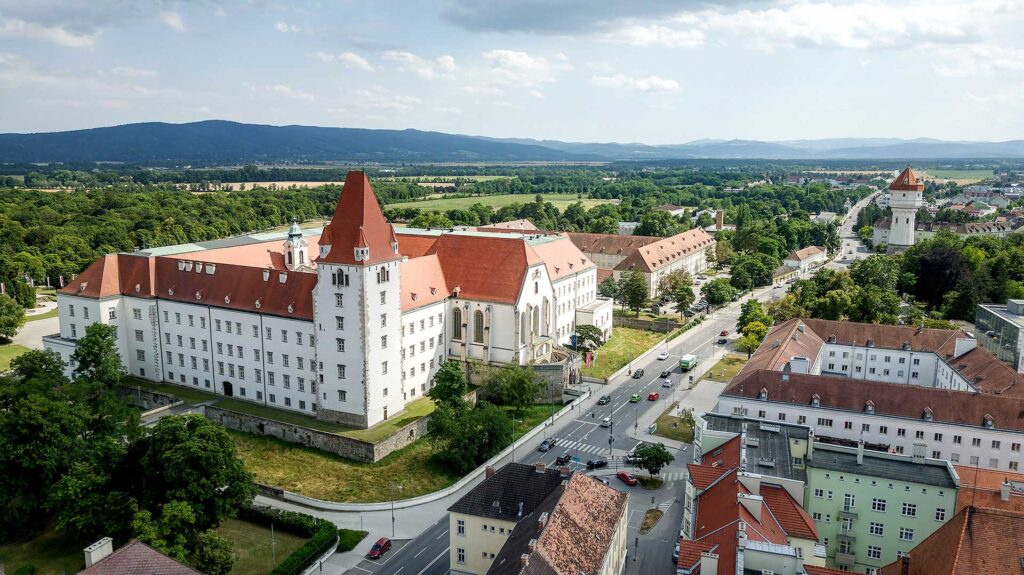
Lately Wiener Neustadt with 9 other major cities of Austria signed a public-public-cooperation agreement with the national climate ministry (BMK) to become a pioneering city. Austrian pioneer cities take the challenge for a conscious and ambitious transition towards climate neutrality before 2040. This complex transformation requires different measures. The measures shall both be developed in-house or developed by others and transferred to Wiener Neustadt. With the high ambition of pioneer cities program and its public-public cooperation comes a financial transfer to build up staff, knowledge and a sustainable and long-lasting governance structure for climate neutrality within the city.
The effect of the entire bundle of measures from the different areas (e.g., governance, implementation districts, learning environment or energy, mobility, buildings, etc.) is subject to fact-based climate monitoring. During the application phase and the ongoing monitoring Wiener Neustadt receives support from ConPlusUltra GmbH a CEESEN founding Member.
At the beginning of the public-public cooperation, the final criteria led (e.g.: implementation horizon until 2030, expected individual climate impacts and roll-out potential within Wiener Neustadt and other cities, necessary competencies, financial coverage, time criticality) district implementation list is not available because there are several processes such as climate neutrality roadmap, coordination with external stakeholders (e.g.: private owners, ARE, EVN), etc. are still ongoing.
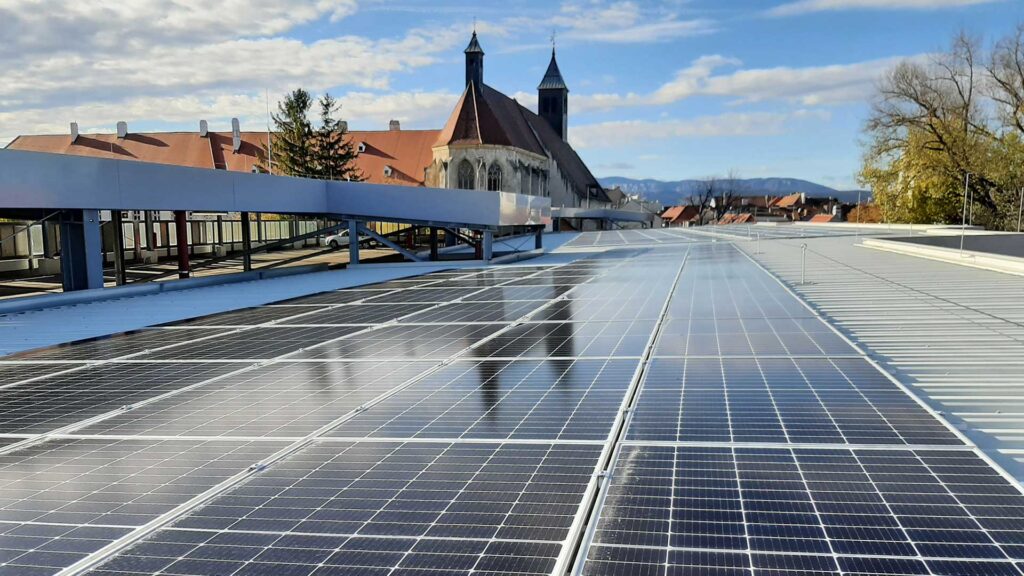
In the groundbreaking first year of the public-public cooperation, the climate neutrality roadmap will be drawn up at the same time. This represents the starting point for the future progress and impact monitoring of the public-public cooperation. Furthermore, the following processes will take place in the first year:
- the organizational upgrade of the previous “Urban Development, Transport, Environment & Energy” group to a staff unit,
- with simultaneous thematic expansion to include the topic of “climate”,
- Adding a new hierarchy level and dividing it into 3 teams,
- Associated with this are new internal processes,
- the onboarding of new employees,
- as well as the selection of the implementation districts and the determination of the first measures
The expected concrete pioneering results of the public-public cooperation (e.g., in the implementation districts, planned STEP WIENER NEUSTADT 2030+ projects implemented earlier) are each placed in a city-wide context in Wiener Neustadt. Out of its own interest, Wiener Neustadt will examine and pay attention to city-wide synergies and roll-out potential. (e.g.: zoning regulations, spatial planning contracts, ...;) as well as passing on what Wiener Neustadt has learned to external parties.
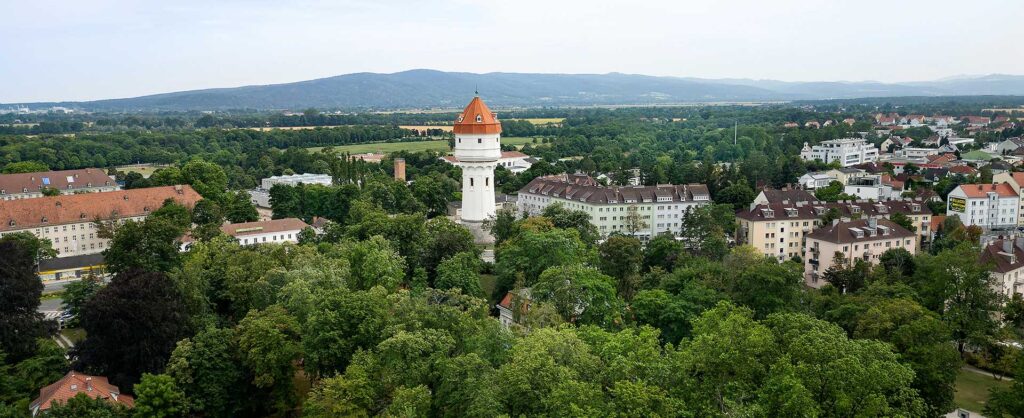
Companion Guide to SECAP Development in the CEE Region
This guide was created as part of the EU-funded Central and Eastern Europe (CEE) Sustainable Energy Union (CEESEU) project. It includes information from training materials developed during the project, interviews with local experts and representatives from CEE cities that have already implemented SEAPs/SECAPs (Sustainable Energy Action Plans/Sustainable Energy and Climate Action Plans), as well as feedback from project partners on the SECAP process in their region.
The full document is available here.
With a reach well beyond the lifetime of the CEESEU project, this Guide can be used by CEE public administrators involved in the SECAP development process – whether in small, human resources-constrained municipalities or large ones with ample professional staffing spread among several departments.
In the course of the project, CEESEU partners identified several key challenges associated with SECAPs in the CEE region, information gathered from municipal partners as well as from the project’s experts, most of which are regional energy agencies:
- Access to finance is a recurrent issue
- Data collection and monitoring are key challenges
- Resistance is greatest in countries where awareness levels appear especially low
- It is easier to exert influence at local levels rather than at the national level
- Staff often do not agree on whether the emission reduction target can be reached
- Politics at the national level can intrude on and influence engagement
- Certain projects are pushed forward only for reasons of positive public relations and visibility
- Overcoming regulatory limitations is hampered by a lack of existing regional initiatives that might provide good examples
- Lack of know-how and human resources as well as inadequate organisational capacity
- Diverse local (political) interests and stakeholder group misunderstandings
The guide provides at least partial answers to these issues and makes specific recommendations from the lessons learned in the setup and development of SECAPs in CEESEU municipalities. It also emphasises the need for outreach strategies or procedural changes by EU-level actors e.g., the Covenant of Mayors (CoM) initiative, which will better address the unique circumstances of the CEE.
Who is the guide for?
The guide provides a comprehensive overview of the planning, development and implementation of Sustainable Energy and Climate Action Plans (SECAPs) with their goal of a 55% reduction in greenhouse gas (GHG) emissions by 2030 and municipal accession to the Covenant of Mayors (CoM). In addition, it provides information specific to the Central & Eastern European (CEE) region as well as examples from the experiences of developing and implementing SECAPs within the CEESEU project. The material herein will provide support for CEE municipalities in developing the main sections of their SECAPs, in engaging with stakeholders, and in the implementation of their Action Plans.
In the main, this guide is meant to support CEE municipalities that may have lagged behind their Western European counterparts in developing SECAPs for a variety of reasons - perhaps a lack of awareness or knowledge of the planning process, a lack of expertise or capacity, missing access to resources, or stakeholder disinterest. It will provide how-to support to public administrators in Central and Eastern Europe for developing their SECAPs, in which their municipalities promote increased energy efficiency, a switch to sustainable energy, a reduction in carbon emissions, and improved adaptability to climate disruptions, thus helping the region contribute towards meeting the EU's emissions neutrality goals.
Supplementary materials
The CEESEU project developed a number of aids that are relevant both for larger cities and for smaller municipalities in the development, implementation and evaluation of SECAPs. These are available at Resources and as linked below.
| SECAP Training materials (I): local and regional SECAP planning processes, political dimensions, stakeholder engagement, and administrative structures; examples from Warsaw and Zagreb | Training slideset I | |
| SECAP Training materials (II): SECAP implementation processes, monitoring, the urban adaptation support tool, data collection, reporting requirements, and financing of SECAPs | Training slideset II | |
| SECAP Evaluation Tool: an easy-to-use tool for municipalities to conduct a quick self-assessment to evaluate your compliance with the development of a SECAP | Original English and translations | |
| A quick guide how to use the SECAP Evaluation Tool | Guide to using the Tool | |
| Policy recommendations to achieve better SECAPs | Policy recommendations | |
| Assessing energy poverty, monitoring emissions, and identification of socially efficient solutions to meet climate policy ambitions | Next steps in your SECAP | |
| Energy efficiency forerunner model: Replication Guidelines | Replicating the energy efficiency model | |
A recent and very useful addition to the toolkit for use by municipalities is the cooperation agreement between CEESEU partner (and a founding member of the Central and Eastern European Sustainable Energy Network, CEESEN) Climate Alliance and Google for use of data in the Environmental Insight Explorer (EIE) for all EU municipalities with more than 50,000 inhabitants. Register first with the EIE, then contact Climate Alliance directly, specifying, on an official municipal letterhead, that you would like to use the EIE data and what the data will be used for.
Innovative energy storage in Ochotnica Dolna municipality
Definition of energy storage
Energy storage is called a device or set of devices for storing energy, connected to the grid and having the capacity to supply electricity to the grid. In addition, the installation, as a rule, must not be a source of emissions that constitute a burden on the environment. In practice, energy storages are nothing more than rechargeable batteries, in which electrical energy is converted electrochemically. Nowadays, the most commonly used for this purpose are lithium-ion batteries, which are characterized by relatively low weight and long life (they last for many thousands of charges). Batteries work by storing and then releasing electrical energy through reversible chemical processes.
Technologies used in energy storages
A lithium-ion batteries are not the only one type of energy storages. Among energy storages, we can primarily distinguish pumped storage power plants, CAES - Compressed Air Storage, flywheels, hydrogen storage, flow batteries, lead-acid batteries, superconducting systems, supercapacitors and the aforementioned lithium-ion batteries.
What is Tauron Group?
The Tauron Group is one of the largest business entities in Poland and is among the largest energy holdings in Central and Eastern Europe. It operates in all areas of the energy market - from coal mining, to the generation, distribution and sale of electricity and heat and customer service. It has a capital of more than PLN 8.7 billion. The holding company employs more than 25,000 people.
Situation in Ochotnica Dolna municipality
An industrial energy storage facility in Ochotnica Dolna (Poland) was connected by Tauron to its low-voltage grid. The installation is a pilot to show the impact of the storage facility on stabilizing the operation of the power grid.
A low-voltage grid with a high concentration of 2 kW photovoltaic microinstallations was chosen as the storage location.
The Ochotnica Dolna municipality has been gradually increasing the share of PV installations on its territory since 2015. As a result, it has one of the highest densities of 1-phase micro-installations in Poland, which periodically limits prosumers' ability to feed energy back into the grid.
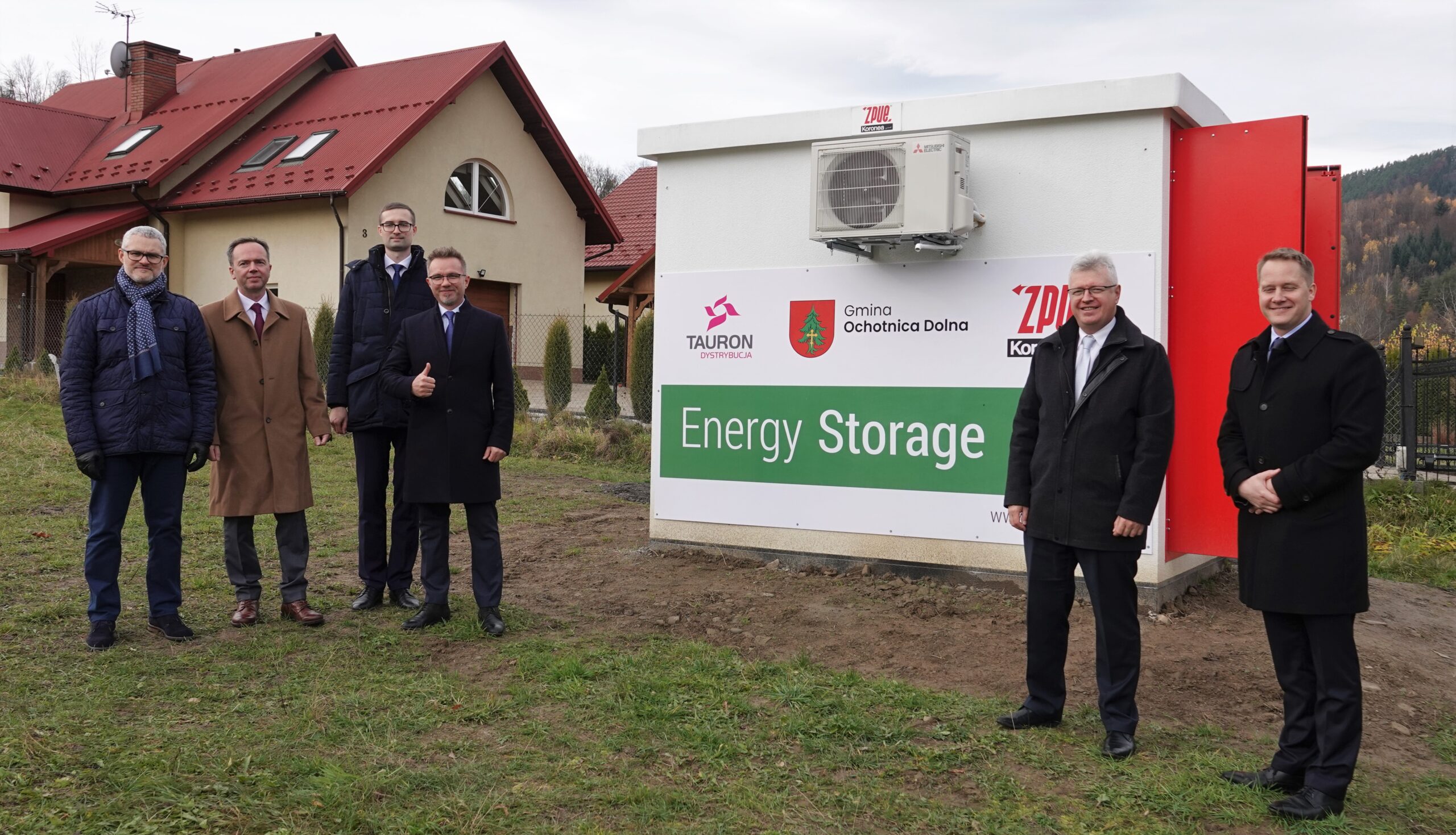
Tauron energy storage in Ochotnica Dolna with a power of 100 kW and a capacity of 180 kWh was connected in parallel to the end of a selected low-voltage circuit. So far, the municipality has paid nothing for the storage. It is assumed that the capacity of 1 kWh is the cost of approx. 3,000-4,000 PLN. So, if the municipality were to pay for the storage, it would have to spend 540,000 - 720,000 PLN. The selected circuit is characterized by a large share of PV micro-installations and connected energy consumers with high power demand. The main recipients of this solution will be the residents of the municipality in Ochotnica Dolna and the surrounding area.
The energy stored in the plant will allow the daily energy needs of 25 households in the area to be met.
Sources:
Magazyn energii - czym jest, jak działa? Ile kosztuje własny magazyn energii?
Nowy magazyn energii stabilizuje gminną sieć energetyczną
Ochotnica Dolna. Magazyn energii spowoduje, że panele fotowoltaiczne nie będą się wyłączały w środku dnia
Otwarcie magazynu energii ZPUE S.A.
Medjimurje Energy Agency Promotes CEESEN Membership for Climate Action
 In order to raise awareness on the need of joint action of local and regional governments on energy and climate issues and to encourage the membership of a large number of organizations and persons from Medjimurje county (county located in northernmost part of Croatia) in the CEESEN network, Medjimurje Energy Agency Ltd. participated on 4th October 2023 in the 8th session of the collegium of mayors and municipality heads in Medjimurje county.
In order to raise awareness on the need of joint action of local and regional governments on energy and climate issues and to encourage the membership of a large number of organizations and persons from Medjimurje county (county located in northernmost part of Croatia) in the CEESEN network, Medjimurje Energy Agency Ltd. participated on 4th October 2023 in the 8th session of the collegium of mayors and municipality heads in Medjimurje county.
The event was recognized as a good opportunity to directly invite the regional government, local governments located in Medjimurje county and their representatives to engage within the network and to acquaint them with the benefits of the membership. As part of the event agenda, the experts from MENEA presented the CEESEN network and invited all present mayors, municipality heads and their deputies and other representatives of local and regional governments in Medjimurje county to join the network.
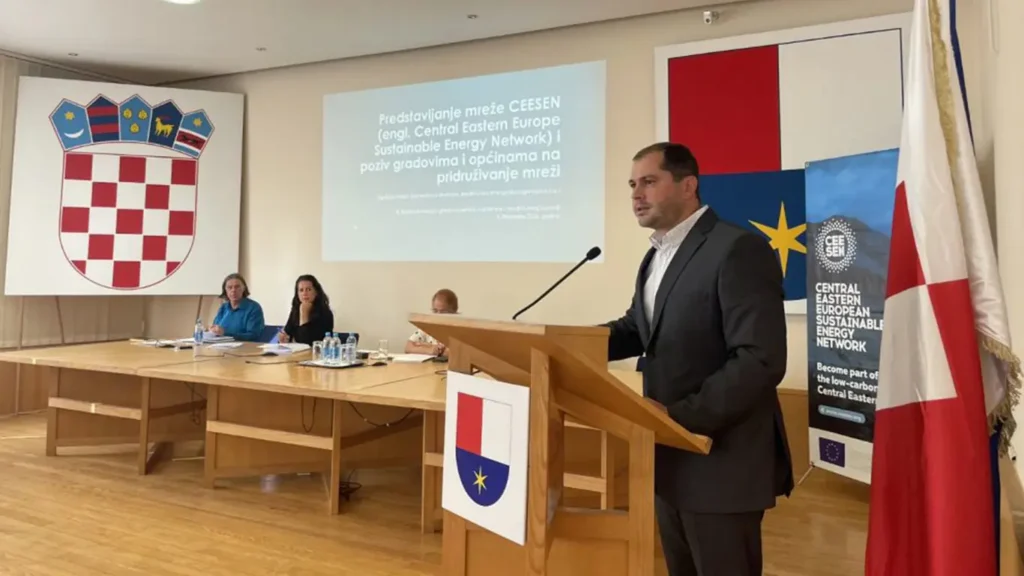 Medjimurje county has been recognized as a sustainable county that has been investing a lot in energy renovation of buildings and encouraging the investments in renewable energy in public and private sectors for several years now. As regional authority, Medjimurje County also provides support to local governments in preparing and implementing their local energy and climate initiatives so hopefully the County and other local governments will recognize how membership in this or similar networks will help them to connect with other experienced local and regional governments and to initiate and implement quality mitigation and adaptation measures in their local contexts.
Medjimurje county has been recognized as a sustainable county that has been investing a lot in energy renovation of buildings and encouraging the investments in renewable energy in public and private sectors for several years now. As regional authority, Medjimurje County also provides support to local governments in preparing and implementing their local energy and climate initiatives so hopefully the County and other local governments will recognize how membership in this or similar networks will help them to connect with other experienced local and regional governments and to initiate and implement quality mitigation and adaptation measures in their local contexts.
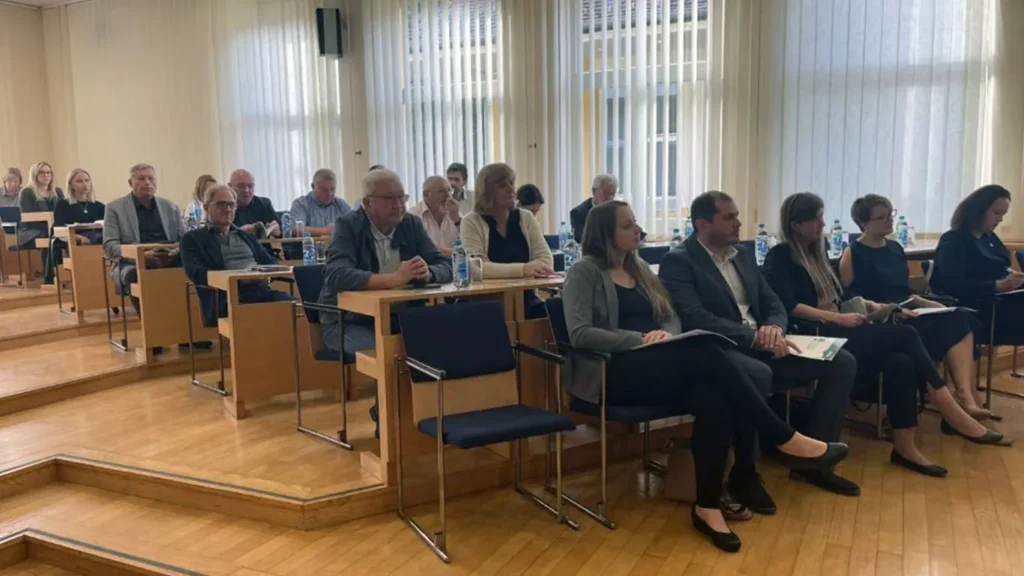
At the Covenant of Mayors seminar in Liepāja, VPR shares its experience of CEESEN networking activities in Vidzeme.
 On September 19, Vidzeme Planning Region energy efficiency expert Edgars Augustiņš took part in a seminar jointly organised by the Latvian Association of Local Governments, the municipality of Liepāja and the European Union Covenant of Mayors Office. The event gathered participants on-site, while some experts participated remotely. The seminar's focus was innovation and financing opportunities in energy efficiency. The expert talked about the objectives of creating the CEESEN network. He also informed about the activities carried out by the CEESEU project of the Horizon 2020 program, including the cooperation with two municipalities of Vidzeme during the project implementation. Valmiera municipality and Cēsis municipality developed sustainable energy and climate action plans (SECAP) on their own with the consultative support of the project consortium.
On September 19, Vidzeme Planning Region energy efficiency expert Edgars Augustiņš took part in a seminar jointly organised by the Latvian Association of Local Governments, the municipality of Liepāja and the European Union Covenant of Mayors Office. The event gathered participants on-site, while some experts participated remotely. The seminar's focus was innovation and financing opportunities in energy efficiency. The expert talked about the objectives of creating the CEESEN network. He also informed about the activities carried out by the CEESEU project of the Horizon 2020 program, including the cooperation with two municipalities of Vidzeme during the project implementation. Valmiera municipality and Cēsis municipality developed sustainable energy and climate action plans (SECAP) on their own with the consultative support of the project consortium.
As experts in the energy field emphasised at the seminar, which local government specialists also agree, SECAP plans are not only planning documents but also a tool for attracting various financial resources for implementing energy-efficient activities at the local level.
Edgars Augustiņš reminded that the CEESEN network was founded in 2006 to bring together energy sector participants from Central and Eastern European regions, encouraging them to engage in activities in the direction of climate and sustainability. At the same time, membership in the network provides an opportunity to represent regional interests at the European Union level. The Vidzeme Planning Region is a co-founder of the network; participation in the network is considered a confirmation of the planning region's interest and readiness to address climate change resilience issues.

The seminar participants could learn about the possibilities of registering for participation in the CEESEN network to exchange contacts, knowledge and experience between the Central and Eastern European regions and their local government representatives. The network's founders actively and thoughtfully use the European Union's financial support to strengthen local municipalities' capacity, moving them in the direction of green course and sustainability.
The seminar participants were also interested in an in-depth presentation of the development progress of the SECAP plans of the two municipalities of the Vidzeme region within the framework of the CEESEU project.
As E. Augustiņš pointed out: "It must be admitted - it is not often that we see that a municipality undertakes to complete the development of SECAP plans on its own - this is an atypical case not only at the level of Latvia but also in the international consortium, we are an exception, for which we receive special attention. This only confirms our belief that this, although time-consuming and complicated, is a correctly chosen municipal tactic - to be involved in the process from beginning to end. It strengthens the sense of co-responsibility in achieving goals."
Municipalities themselves performed data maintenance, data group creation, involved stakeholders, organised working groups and analysed the situation, finding the most appropriate solutions. Both municipalities also renewed the commitment of the Covenant of Mayors.
It should be noted that within the framework of the CEESEU project, the municipality of Cēsis region developed the SECAP plan on a city scale but is currently actively working to integrate the other territories of the area into the action plan. On the other hand, the municipality of Valmiera region is to be commended for its chosen path - to include in the plan and foresee actions for the industrial sector as well, which is an additional challenge but will effectively affect the reduction of carbon emissions.
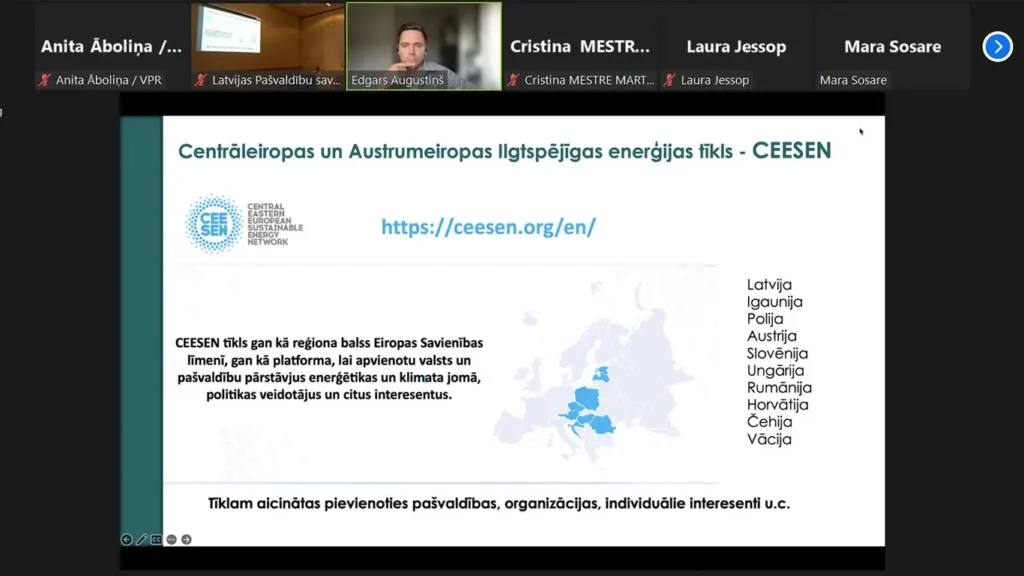
Within the framework of the CEESEU project, several trainings were also organised for specialists of local municipalities in Vidzeme to encourage them to develop or renew sustainable energy and climate action plans. Edgars Augustiņš reminded us how important it is for local government specialists, including those at the management level, to offer educational seminars, providing opportunities for local governments to solve problem issues together with their colleagues - specialists from neighbouring municipalities, under the guidance of experts. It promotes the exchange of ideas and solutions and the formation of closer relations for the realisation of future projects. That is why the CEESEN network members have started the implementation of a new project in the LIFE program - the main goal of CEESEU-DIGIT is to develop an energy and climate action plan for the region, and it is also planned to continue organising training for local government specialists on topics in which the knowledge capacity should be further strengthened.
"Observing the municipalities and evaluating the previous experience in the development of various documents, including in the field of energy, the conclusion is one - the developed documents must be meaningful, high-quality, and during the development process, it must be kept in mind that the document will be a tool for daily work and is not just a tick on the to-do list. It is doable!” said Edgars Augustiņš at the end of his presentation.
Agenda
Local authorities channel their opinion on energy and climate in the national legislative process informally
Key messages
- No mandatory emission target obligation for local governments in any country.
- The local energy and climate policies are legally driven by Energy Act and/or Energy Efficiency Act.
- Public hearing is occasionally responded through umbrella organisations though informal approach is dominant in national legislative process.
CEESEU-DIGIT
In CEESEU-DIGIT, where are 6 pilot regions, analyses of national regulatory framework was done. The respondents were local experts. It was identified that there are no emission target obligation for local governments in any country within Nationally Determined Contributions (NDC). Self-defined pledges originate from Covenant of Mayors or other best policy practices. Energy management was required by local government level in Latvia and Slovenia. In Poland and Czech energy and climate plans are required for regional level.
Partners mentioned 24 laws/regulations regarding energy or climate that has influence on local government level processed or completed in their states. 15 of them were rated with high importance an impact for local government by scoring in evaluation 8 points out of 10 possible in these two categories. Only for six of them local government engagement was rated as at least average (3 out of 5). Most common laws/regulations were Energy Law/Energy Efficiency Act/law (Croatia, Slovenia, Poland, Latvia). Coverage was from local government act (Poland) and municipal buildings energy efficiency and renewable integration regulations to electricity/heat market acts and renewable energy market regulations. Also, strategies/plans like NECP, long-term building strategy, low carbon development strategy and national urban policy were mentioned.
In questionnaire it was also asked about current mechanomes to react to policy development and how often they are used by local governments. As result reacting to laws/regulations is quite common through umbrella organizations using formal and informal channels. Local governments do not react often or does not have such option (in 3 countries) to individually react to laws/regulations (except Slovenia). Informal approach is more common but used occasionally (if there is very important law or if there is events etc where it is possible).
It was also identified that low activity is bit more local governments side problem compared problems with existing mechanisms. Evaluation was that if there would be better mechanisms local governments would not participate lot more. This is also shown by the identified barriers as in 1..5 point highest barrier for municipalities is staff shortage – there is not just enough people or municipalities do not have resources to hire more specialists to deal with the topic. In all regions except Lativa and Slovenia (score for both was 4), staff shortage barrier was rated with highest score (5). The second biggest barrier was energy know-how in municipalities with average score of 4,1. Third barrier was legal know-how with score 3,6. Complexity and Bureaucracy was rated average (3).
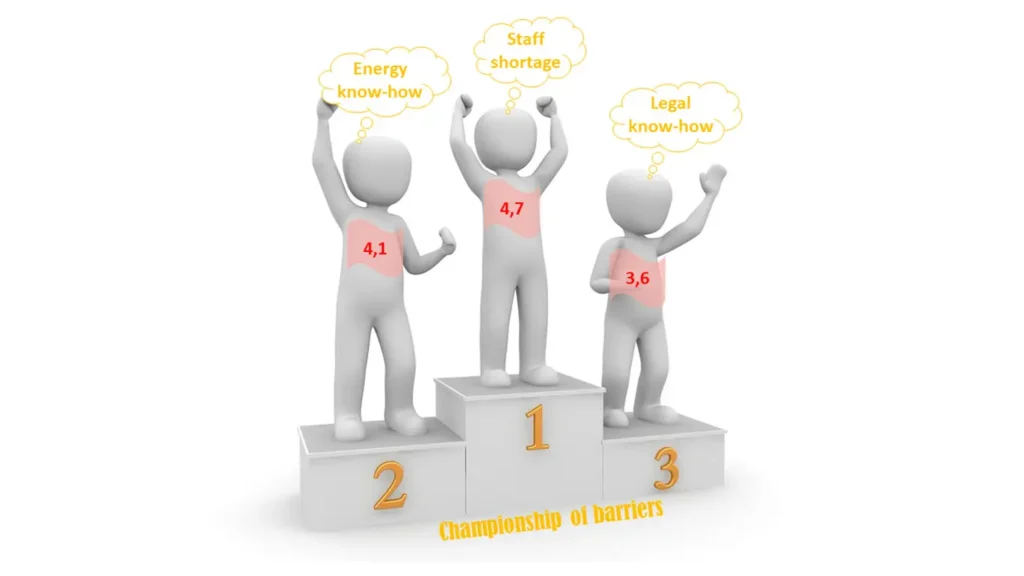 CEESEU-DIGIT is right time and right place and will support local governments to rise knowledge. Helping governments with staff problems does not have easy solution, but project is trying to help them to find additional resources by supporting preparing applications for projects and grants that may mitigate the problem. Project will also help to make the voice of municipalities heard in the country that hopefully also helps to mitigate the staff problem in near future.
CEESEU-DIGIT is right time and right place and will support local governments to rise knowledge. Helping governments with staff problems does not have easy solution, but project is trying to help them to find additional resources by supporting preparing applications for projects and grants that may mitigate the problem. Project will also help to make the voice of municipalities heard in the country that hopefully also helps to mitigate the staff problem in near future.
Responses to the energy and climate crisis - Sustainable Municipalities Conference 2023
Budapest hosted the CEESEN Sustainable Municipalities Conference between 6-7 September 2023. The event was organized by WWF Hungary in tight cooperation with the CEESEU project's consortium. The main goals of the conference were to strengthen the CEESEN network and foster green energy transition, climate adaptation, and municipal-level sustainability in the CEE region.
With this conference, CEESEN (Central Eastern European Sustainable Energy Network) has demonstrated its ambition to be a key player in the green transition and also in the sustainability efforts at local level in the Central Eastern European region. The network's importance lies not only in its role as a communication hub for local governments and NGOs in the region, but also in its role as an excellent platform for international cooperations, which facilitates resource and partnership building for EU and other regional tenders.
The hybrid event hosted more than 200 representatives from 20 countries. Besides professional network development, the participants also gained new and useful information about energy security, policies and financial aspects of SECAP development, energy poverty, and climate adaptation at the local level. During the breaks participants could check the SECAP exhibition which was created from the one pager summaries of the 22 SECAP documents created during the CEESEU project.
Photos of the conference
The first of the two days of the conference was the plenary day. The first opening speech was given by Hector Pagan (UTARTU) as the representative of the lead partner of the CEESEU project, introducing the CEESEN network and the potentials it offers. Eero Ailio (Policy Adviser of the European Commission) continued the opening remarks talking about the European policies for a green energy transition.
During the whole day, nearly 20 speakers presented their thoughts and ideas in four different sections; which were energy security, financing options, energy poverty and climate adaptation. Each section ended with a panel discussion involving all the speakers of the session moderated by Dr. Lilla Bartuszek.
The presentations and the panel discussions of the plenary day are available on the CEESEN - Sustainable Municipalities Youtube channel.
Videos and presentations
The second day the conference program continued with interactive workshops led by the consortium partners of the CEESEU and CEESEU-DIGIT projects, where our guests could learn about the implementation of the aforementioned topics of the first day’s sections.
The site visits also offered a wide range of activities inside and outside the city center of Budapest with urban walks and visiting water retention solutions.
The general takeaway of the conference was that despite the tangible challenges in the CEE region, municipalities have a great opportunity to reach their climate goals.
To reach these common goals, the municipalities need to work together closely with all of the stakeholders, they have to share their experiences, support and learn from each other. This is what our CEESEN network aims to make easier for its members; creating a knowledge base, a voice for the region at the EU level and a platform for connecting together public administrators, policy makers and other key actors working for low-carbon economies in the CEE.
Join our growing community and get informed about the news first hand!
Follow the CEESEN community on Facebook!
Biowaste for sustainable buildings materials
Day after day we are overwhelmed by waste of every type and a big part of them have biological origins; they come from industries, farms or mineral sector and especially from the agricultural production and food consumption. Numerous studies discovered and later highlighted some peculiarities of the elements which compose the garbage; key features, mainly physical or chemical, that allows to give a second life to all this waste, using them for different applications, as the realization of bio-composites to substitute common materials, especially those used in the construction sector, and improving many times their characteristics as mechanic resistance or other technical ones.
A turn toward the use of these new materials could result in a more sustainable solutions in supporting of the great number of new buildings realized in the last three years in Poland. A main example for a possible replacement of the classic concrete, which production is actually responsible of the 68% if manufacturing emission, is represented by the lignin (the complex polymer present in every bio-component as filler between cells), hemp fiber, bamboo fiber or recycled fibers coming from the textile industry. Main technical characteristics of these elements are the high mechanical properties, the binding properties (especially of hemp fibers used for the realization of composite and insulation materials) and their thermal conductivity value which is really close to the classic ones used in the insulation of facilities. The presence of cellulose in every type of bio-materials, makes this last very useful for the regulation of moisture content in the air when implemented in structures or linked with other building materials, offsetting some shortcomings.
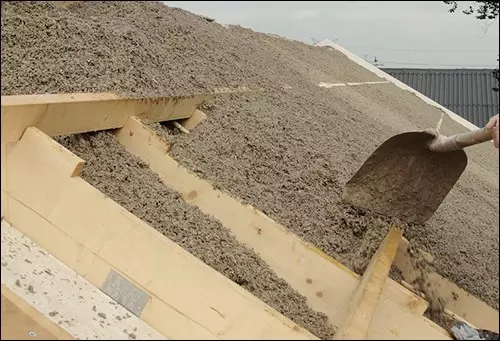
The use of these fibers, as presented by a study of the Department of Applied Bioeconomy of Wrocław, especially the hemp shows great advantages thanks to the numerous properties of the bio composite that are not only technical but also economic; like the good rate cost-durability and the possibility to increase the trust in the utilization of recycled materials in all sectors, where the building one is probably the most important, generating a circular economy and making different sectors more sustainable, a great solution for present and the future.
SECAP of Stara Kornica by MAE
| 4.696 (2020) | |
| 119 km2 | |
| 2020: 49.043t | |
| 2030: 21.992t |
Stara Kornica is a rural municipality located in the Łosicki County, Mazovian Voivodeship, right next to Poland's eastern border. Two rivers flow through it: the Klukówka and the Kałuża. The municipality's natural resources are chalk deposits.
The municipality is a typically agricultural area, where the majority of the working population makes their living from agriculture (production of pigs, dairy cattle and cereal crops).
By joining the Covenant of Mayors, Stara Kornica municipality has committed to reduce CO2 emissions by 55% by 2030, compared to the base year (2020). The planned actions in the municipality concerning emission reduction and adaptation to climate change should contribute to the reduction of CO2 emissions in the municipality by more than 55% (27 051 Mg CO2/year) - thus this target is attainable.
Planned measures include: thermomodernisation of schools in Stara Kornica, replacement of heat sources and thermomodernisation of buildings in the private sector and in residential buildings, revalorisation and adaptation of the manor park in Kobylany, thermomodernisation of the municipality office building, modernisation of street lighting, photovoltaic installations in the municipality, removal and disposal of construction elements containing asbestos, construction of water management system , construction and reconstruction of the water treatment plant in Wólka Nosowska, construction of household sewage treatment systems, purchase of cars and equipment for the fire brigade, promotion of good energy saving habits and ecological behaviors among the municipality's citizens.
Improving energy efficiency in the residential sector will contribute most to the reduction of CO2 emissions across the municipality. The estimated reduction through thermomodernisation and replacement of heat sources in this sector is 20,903 Mg CO2/year. Photovoltaic installations installed on both public buildings, individual owners and industrial buildings will increase the share of green electricity by 7,871 MWh/year.

The SECAP was created by MAE and supported by CEESEU project.
The entire document is available on the link below in Polish language.
https://ceesen.org/document/secap-stara-kornica-poland/
| The SECAP was implemented with the support of the CEESEU project. The CEESEU project received funding from the European Union’s Horizon 2020 research and innovation programme under grant agreement GA: 892270. Disclaimer: The author of this content is solely responsible for its content, which does not necessarily reflect the views of the European Union, and neither EASME nor the European Commission is responsible for any use that may be made of this content. |
